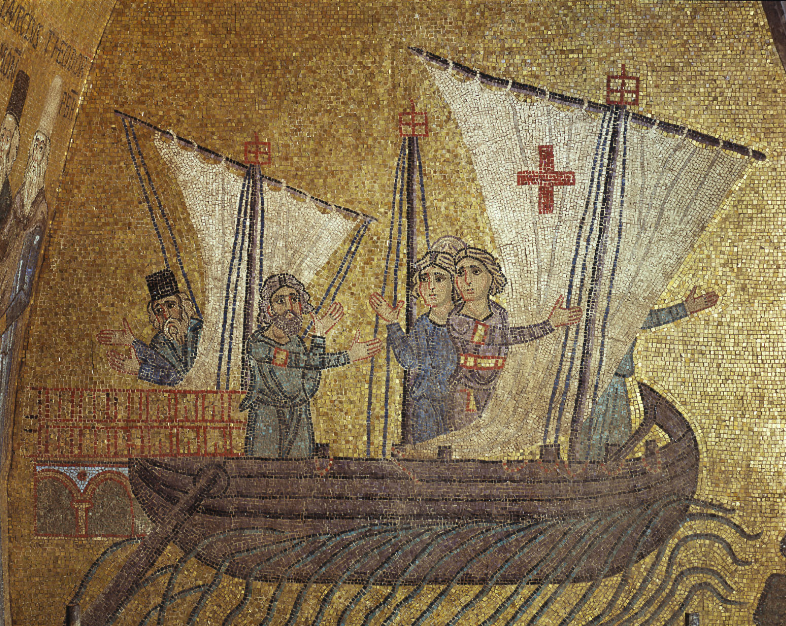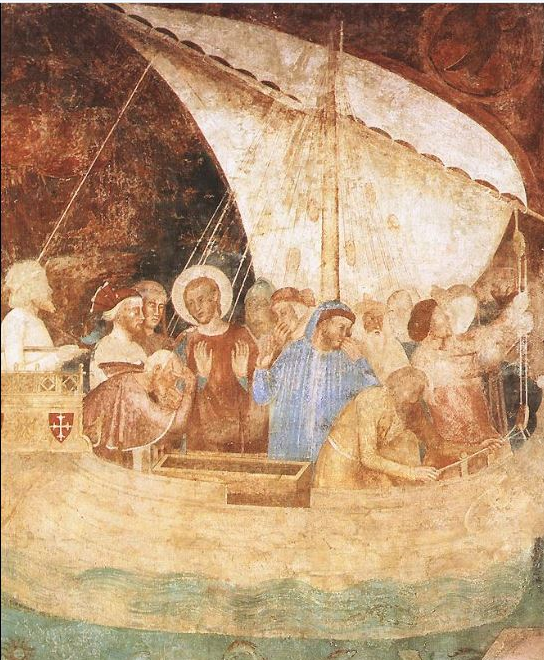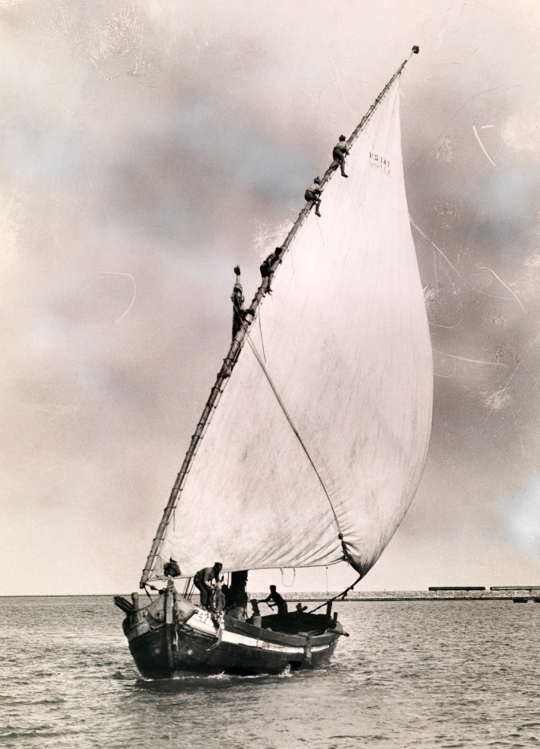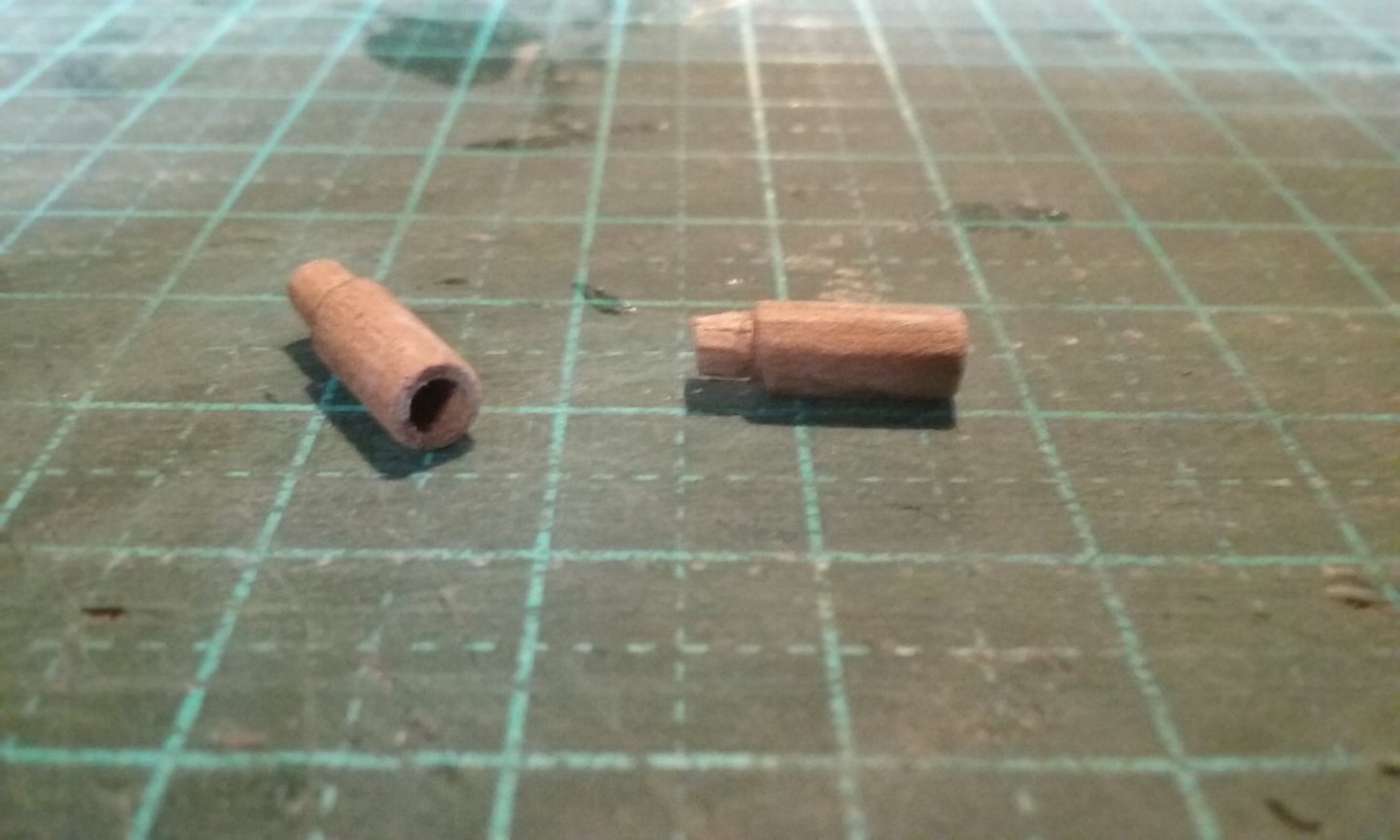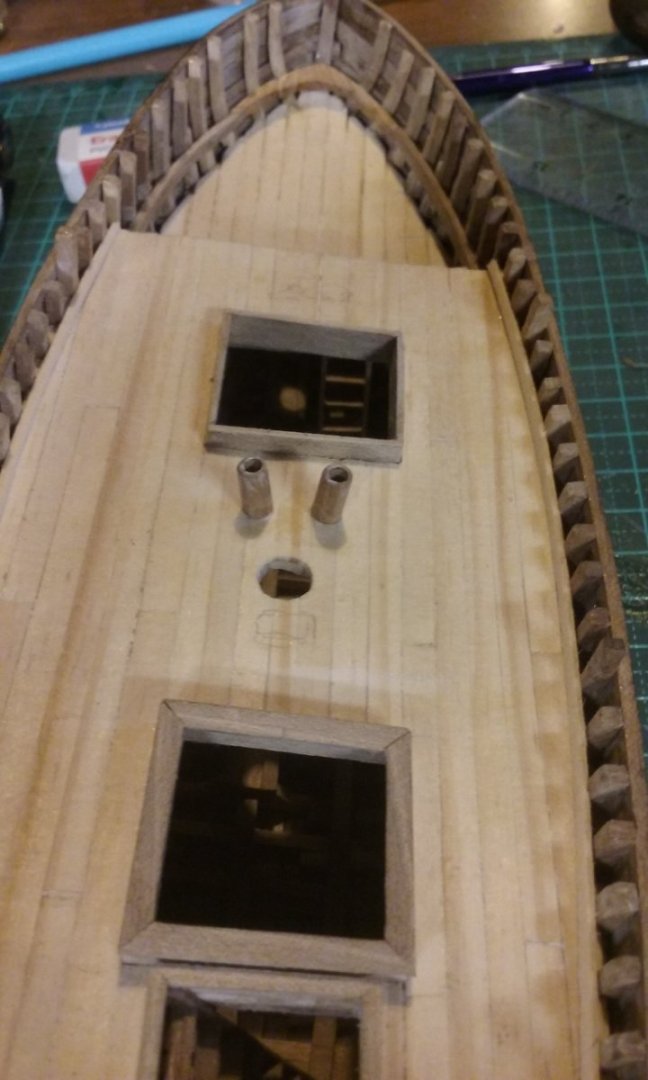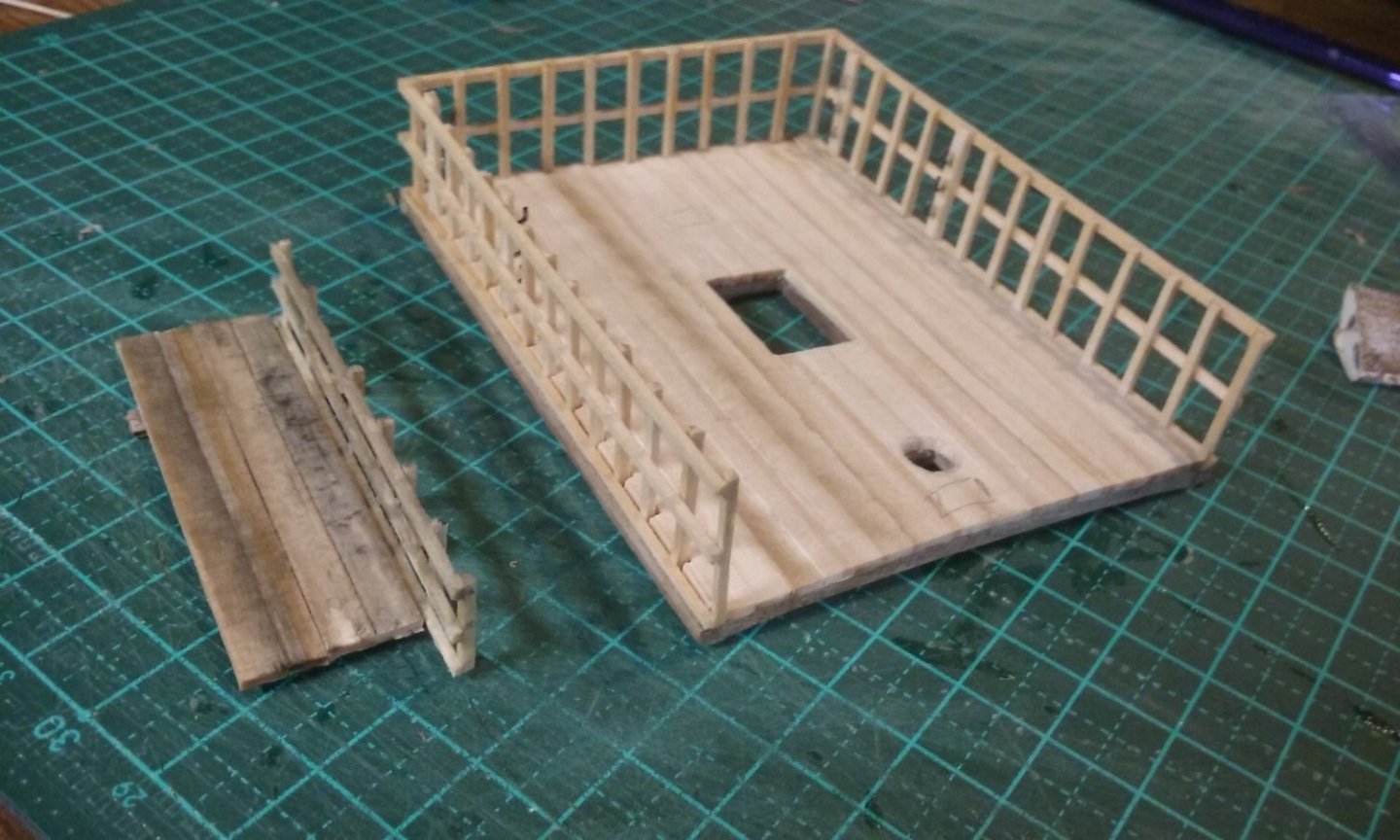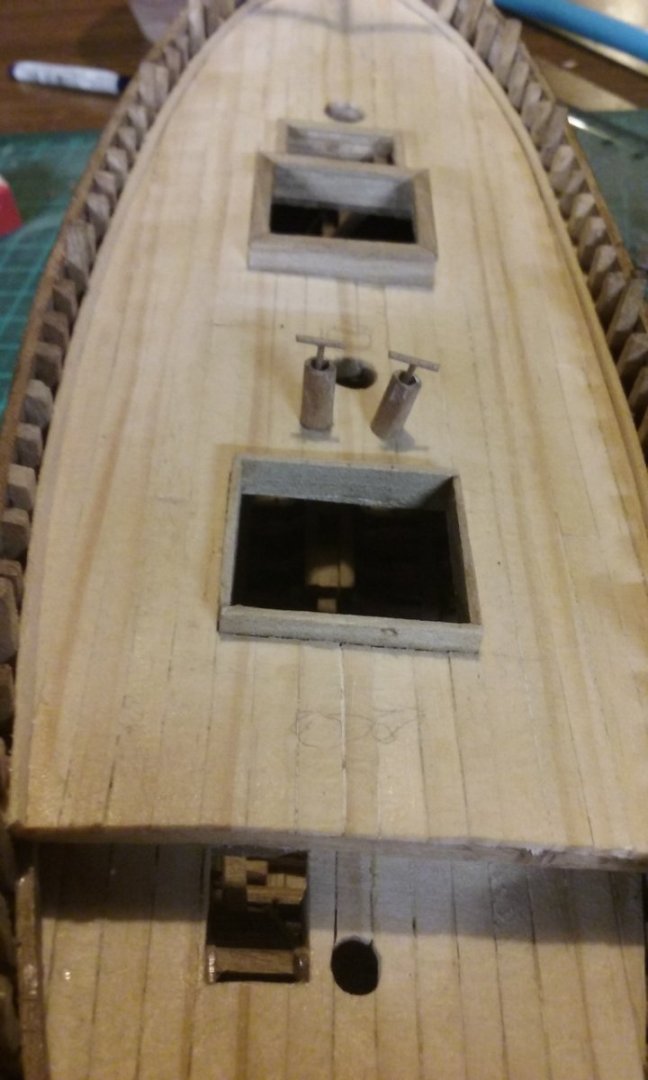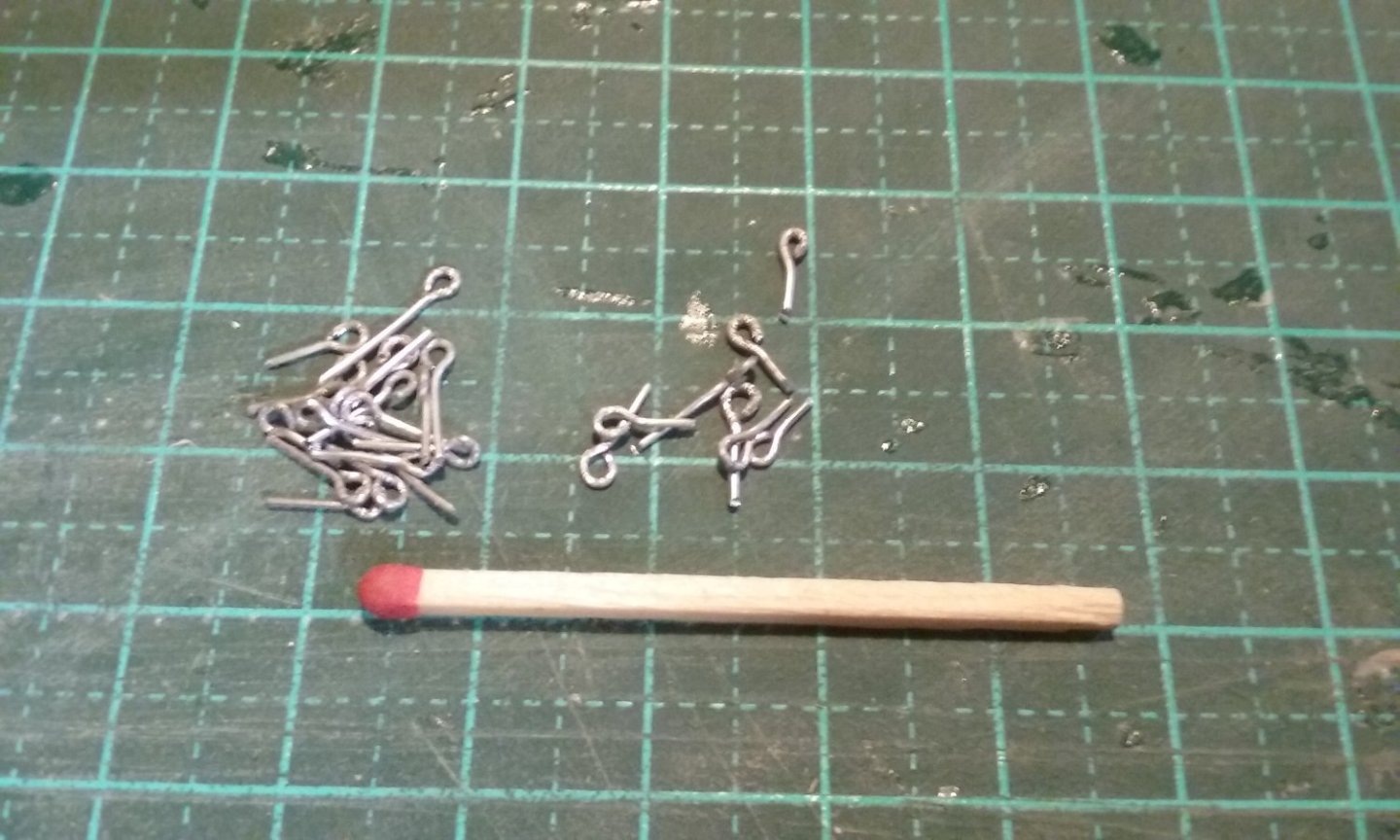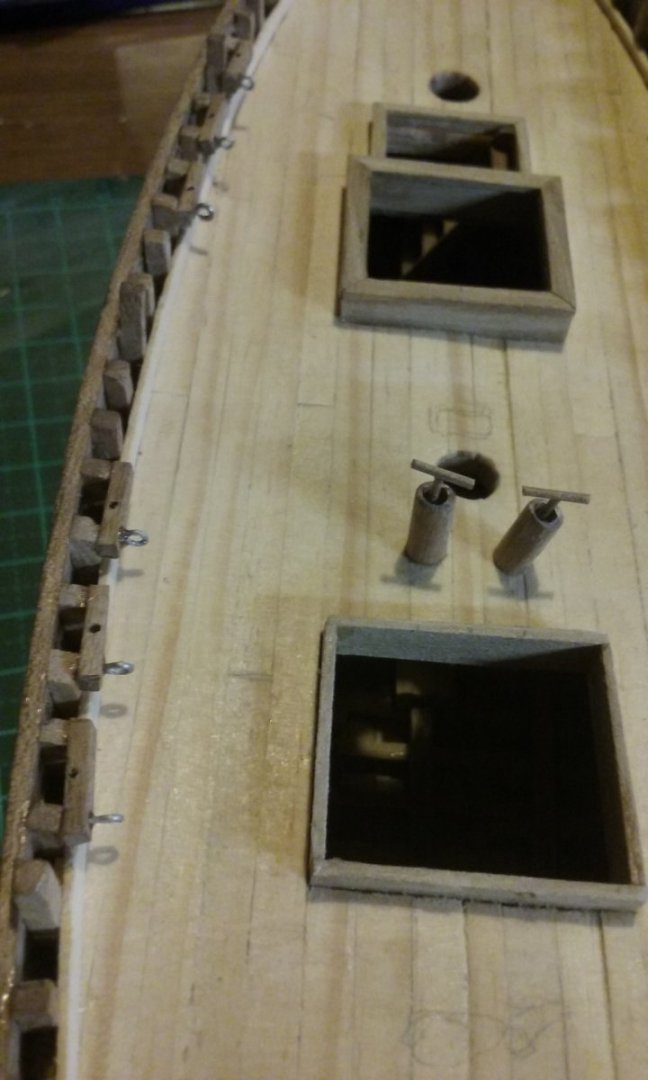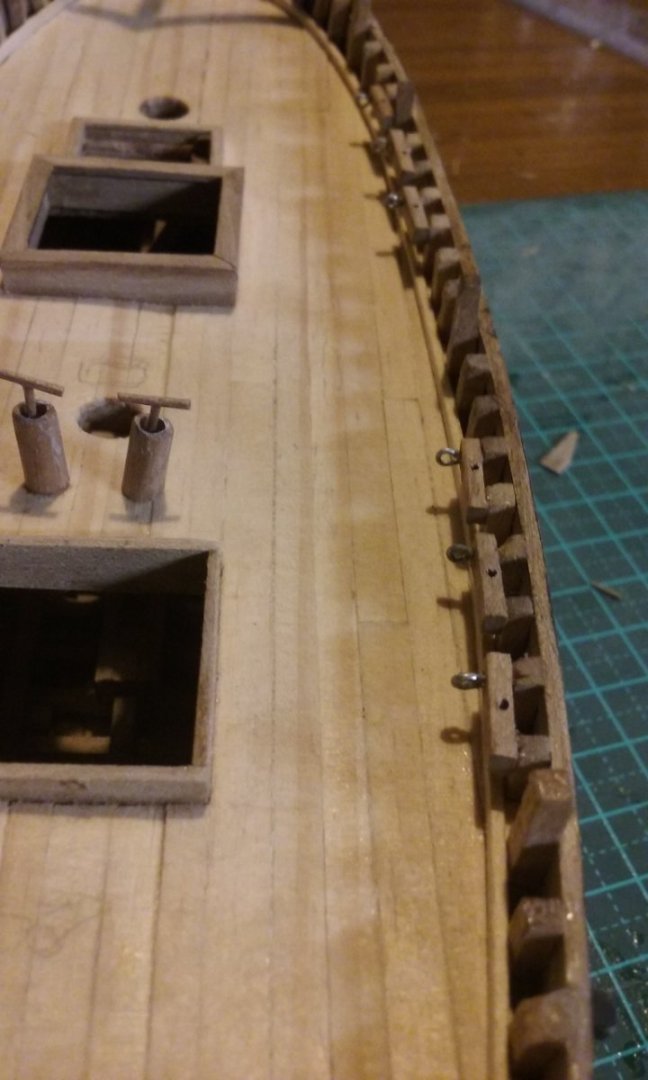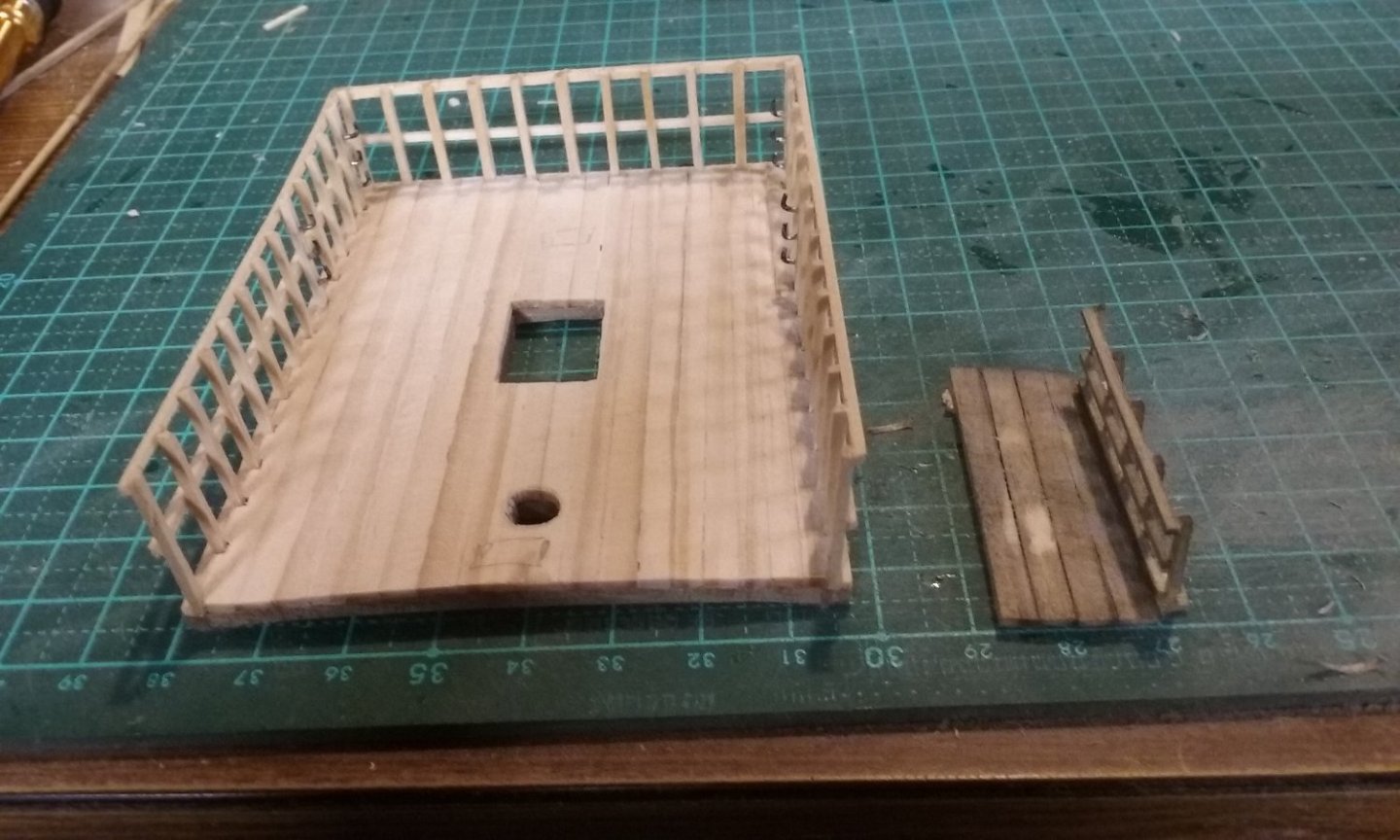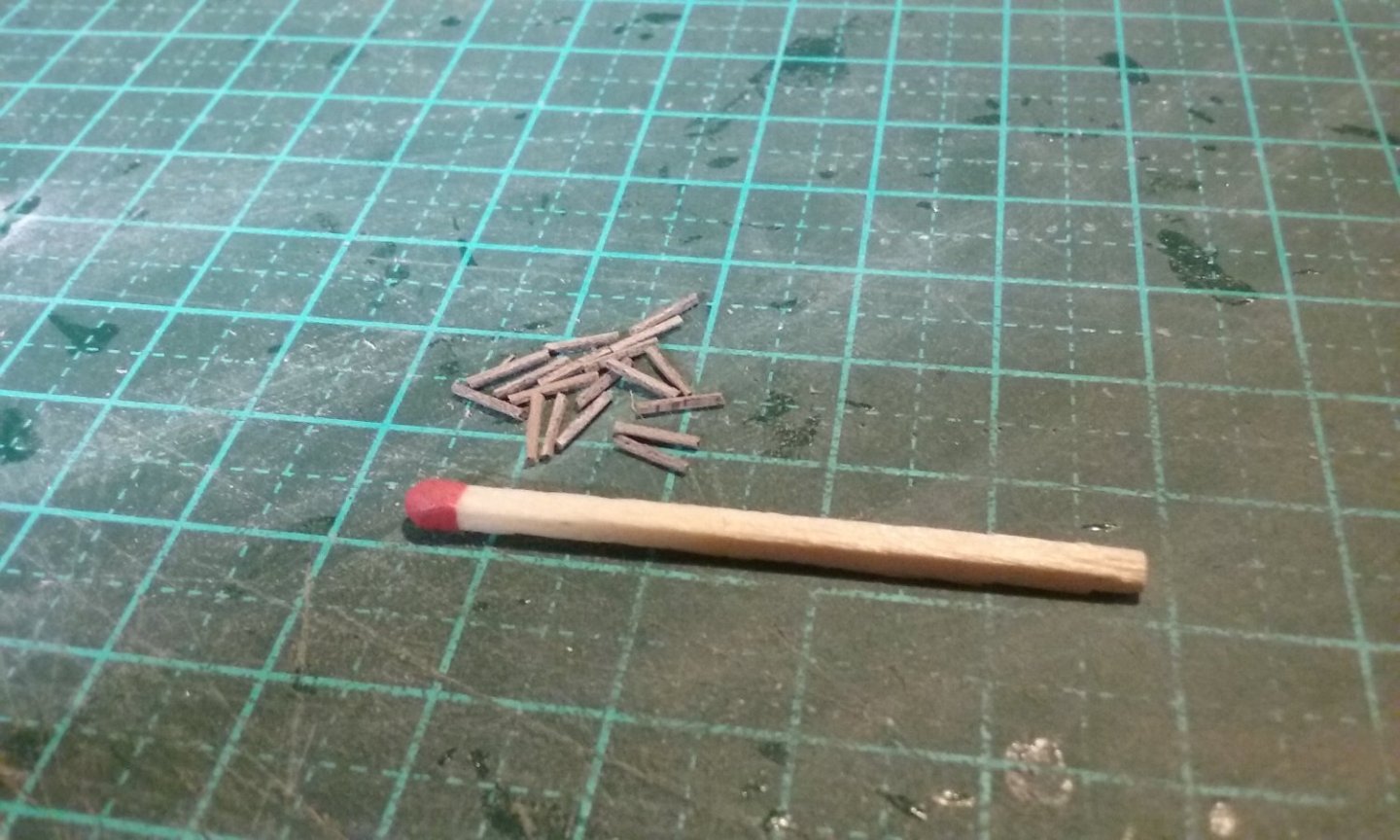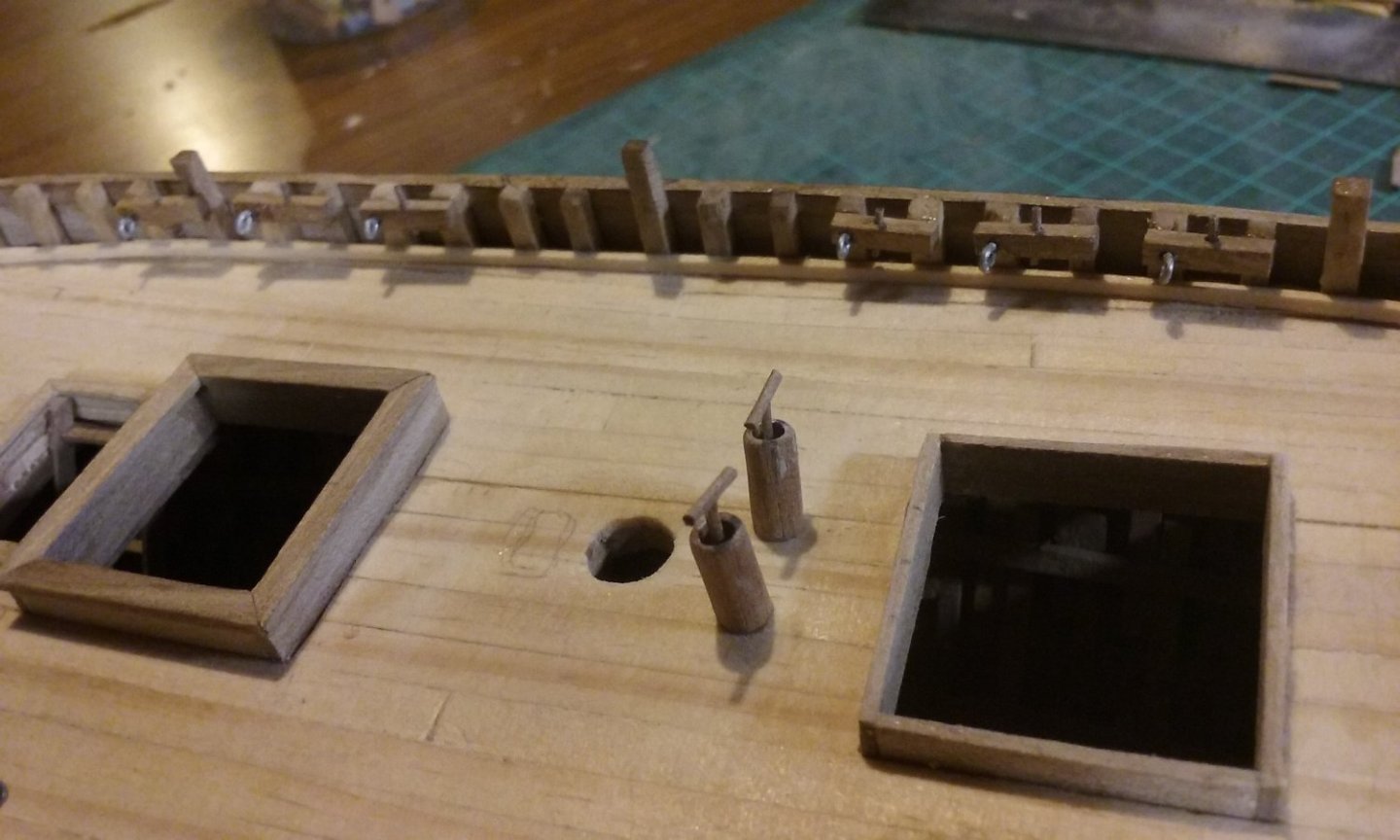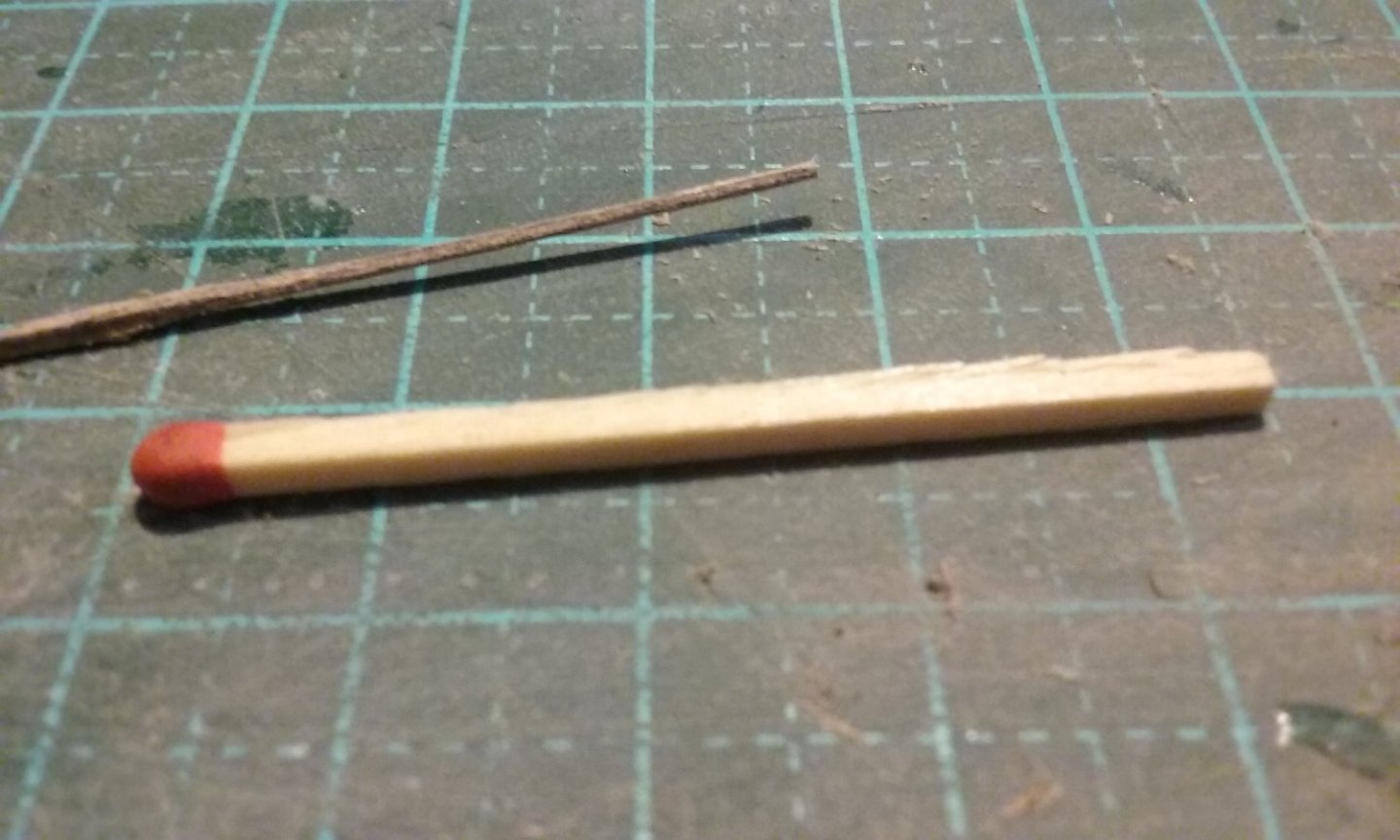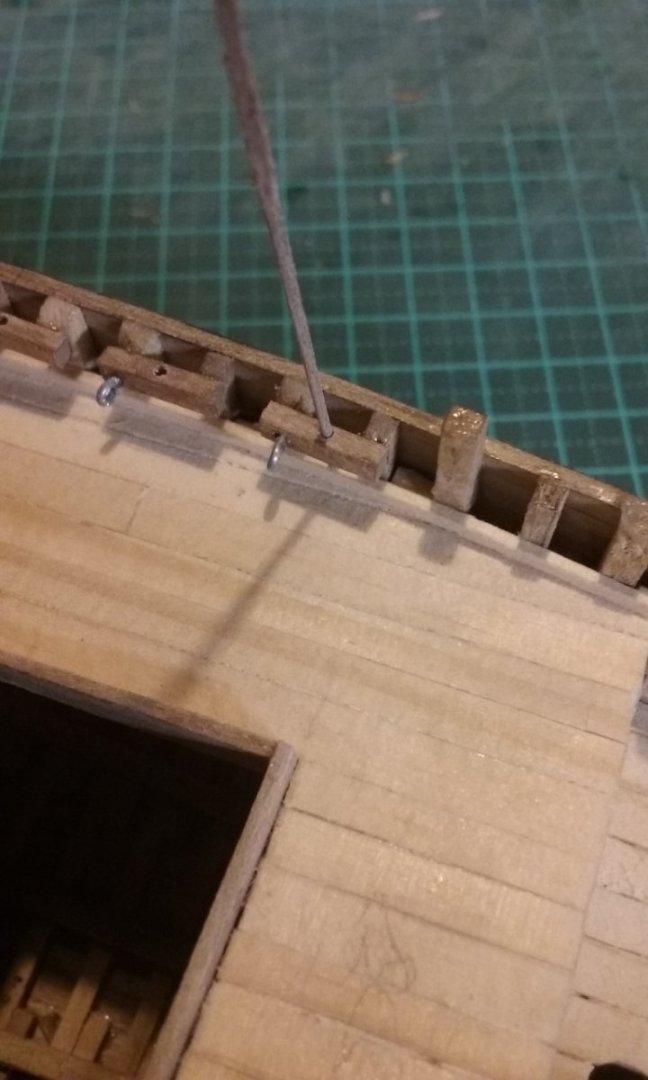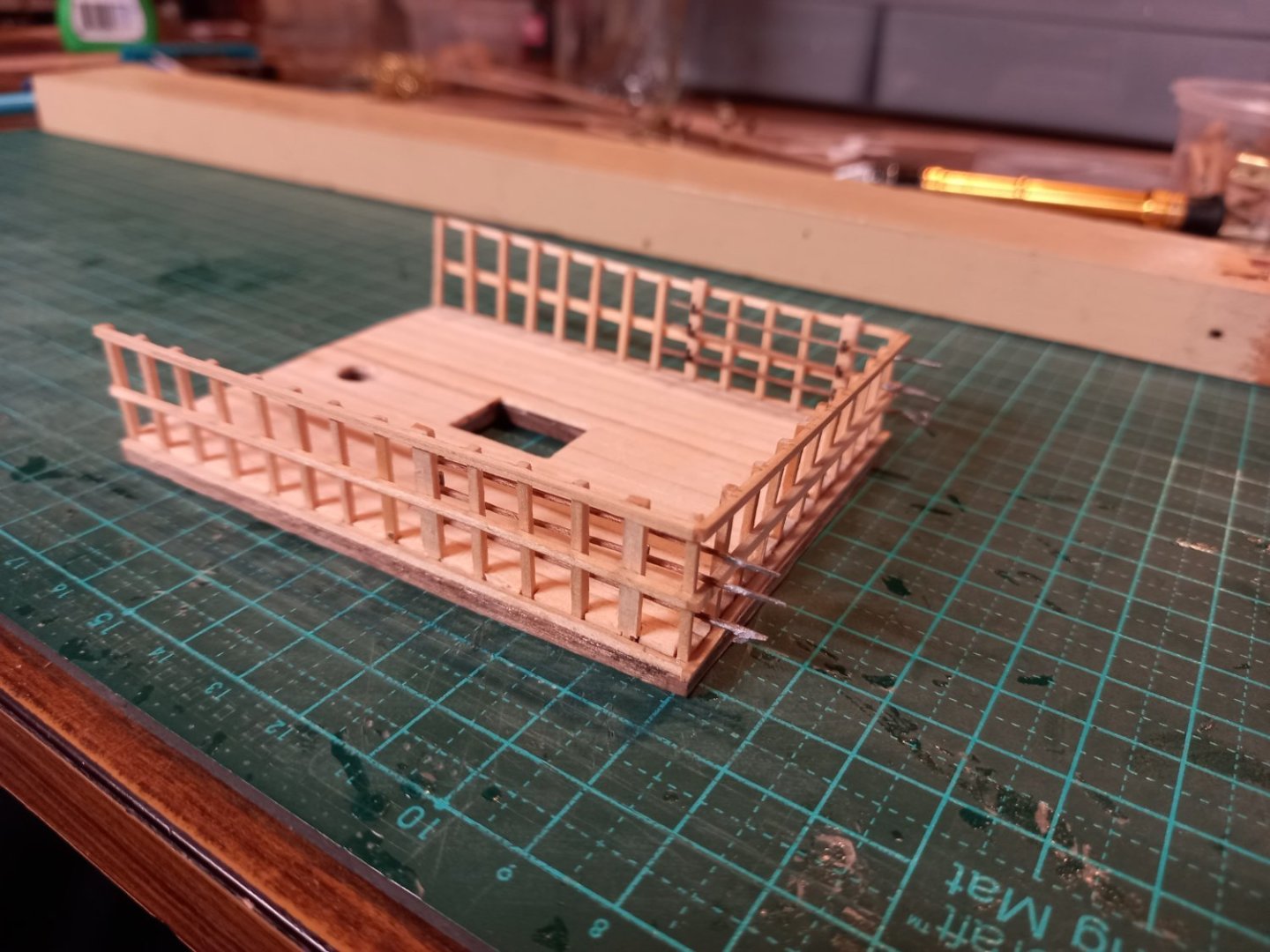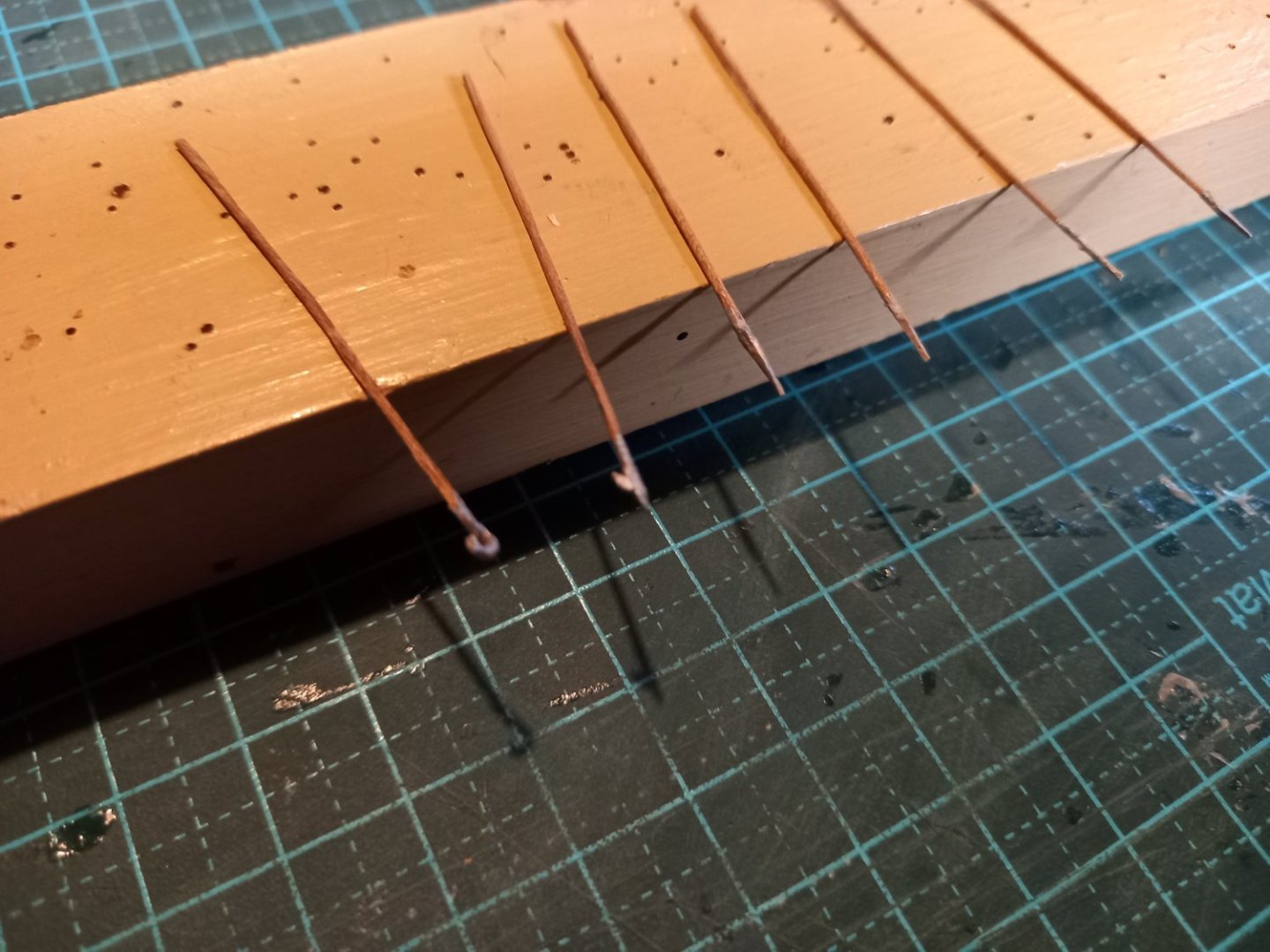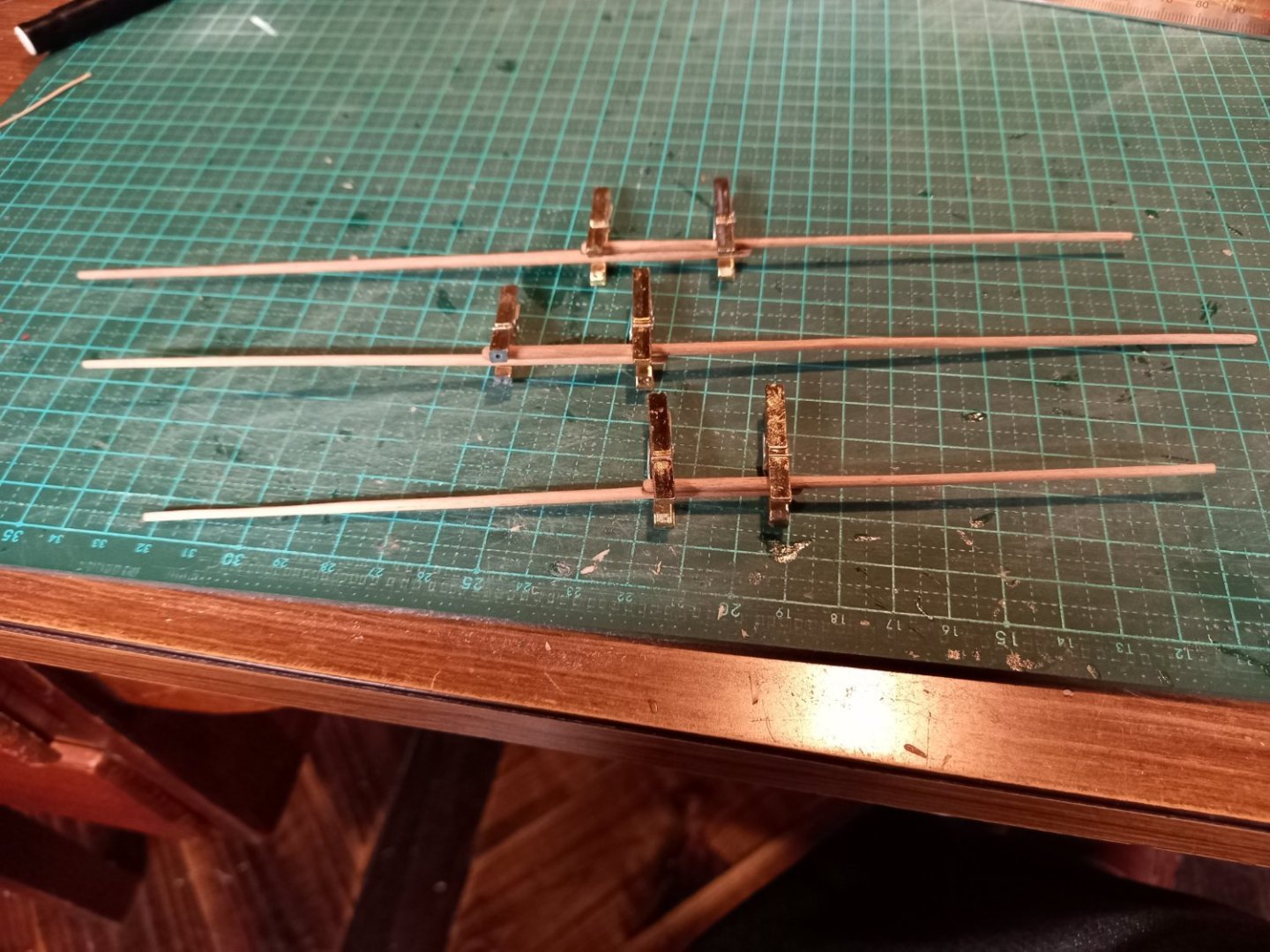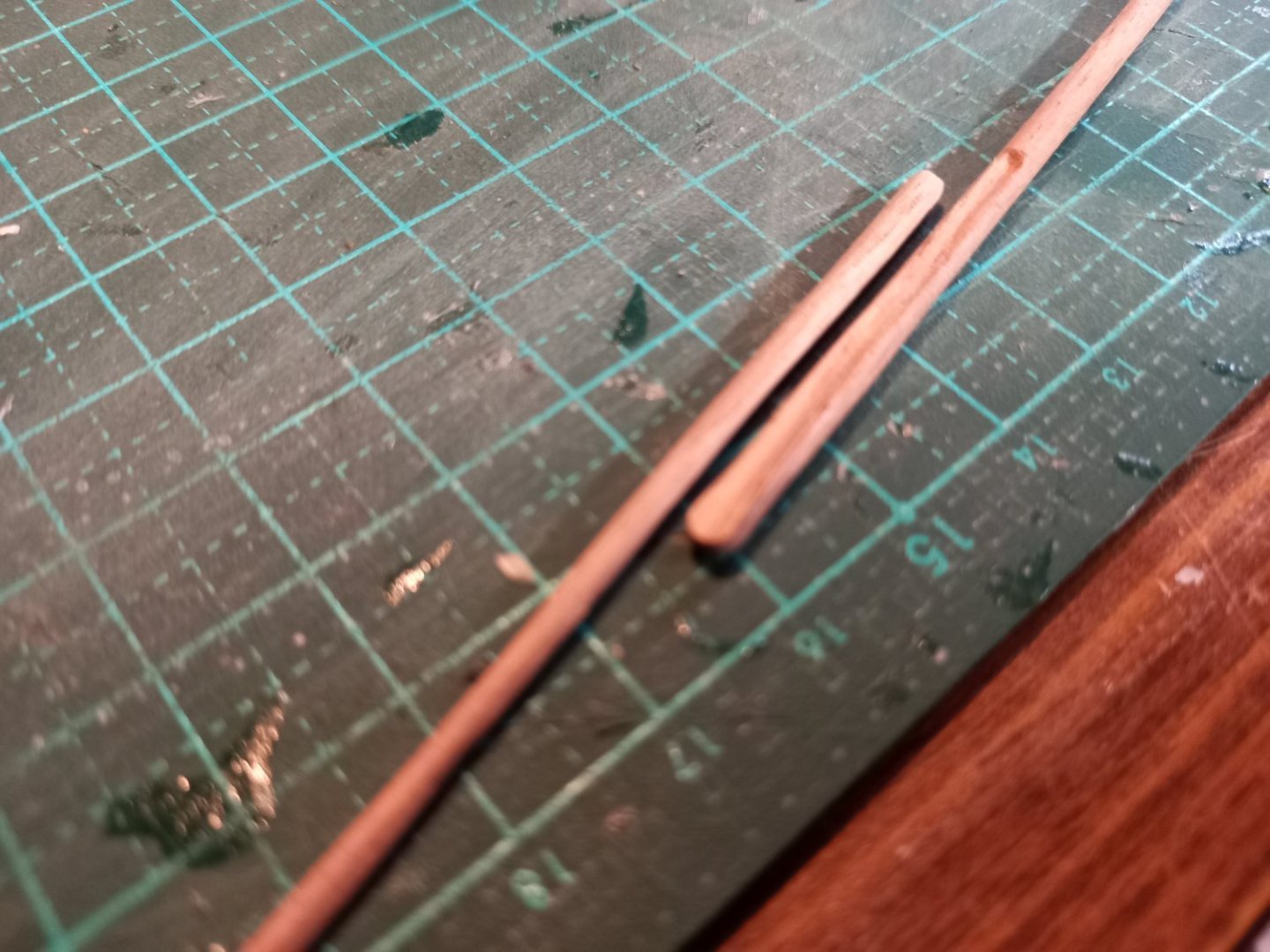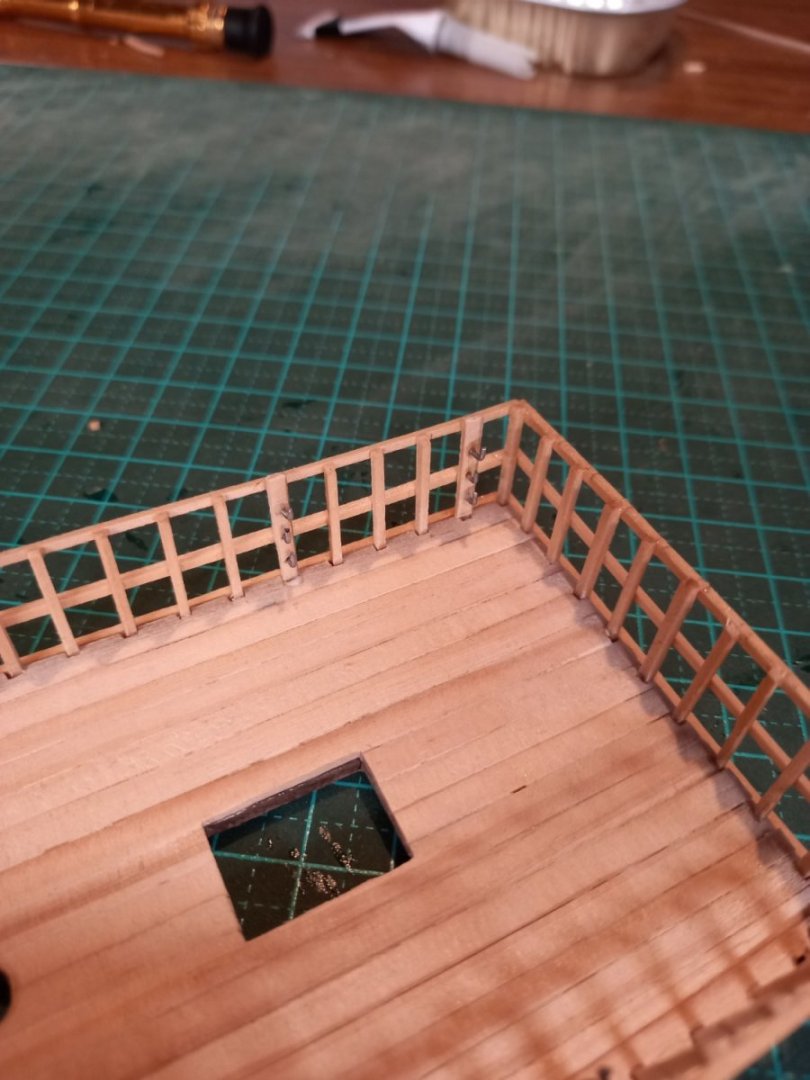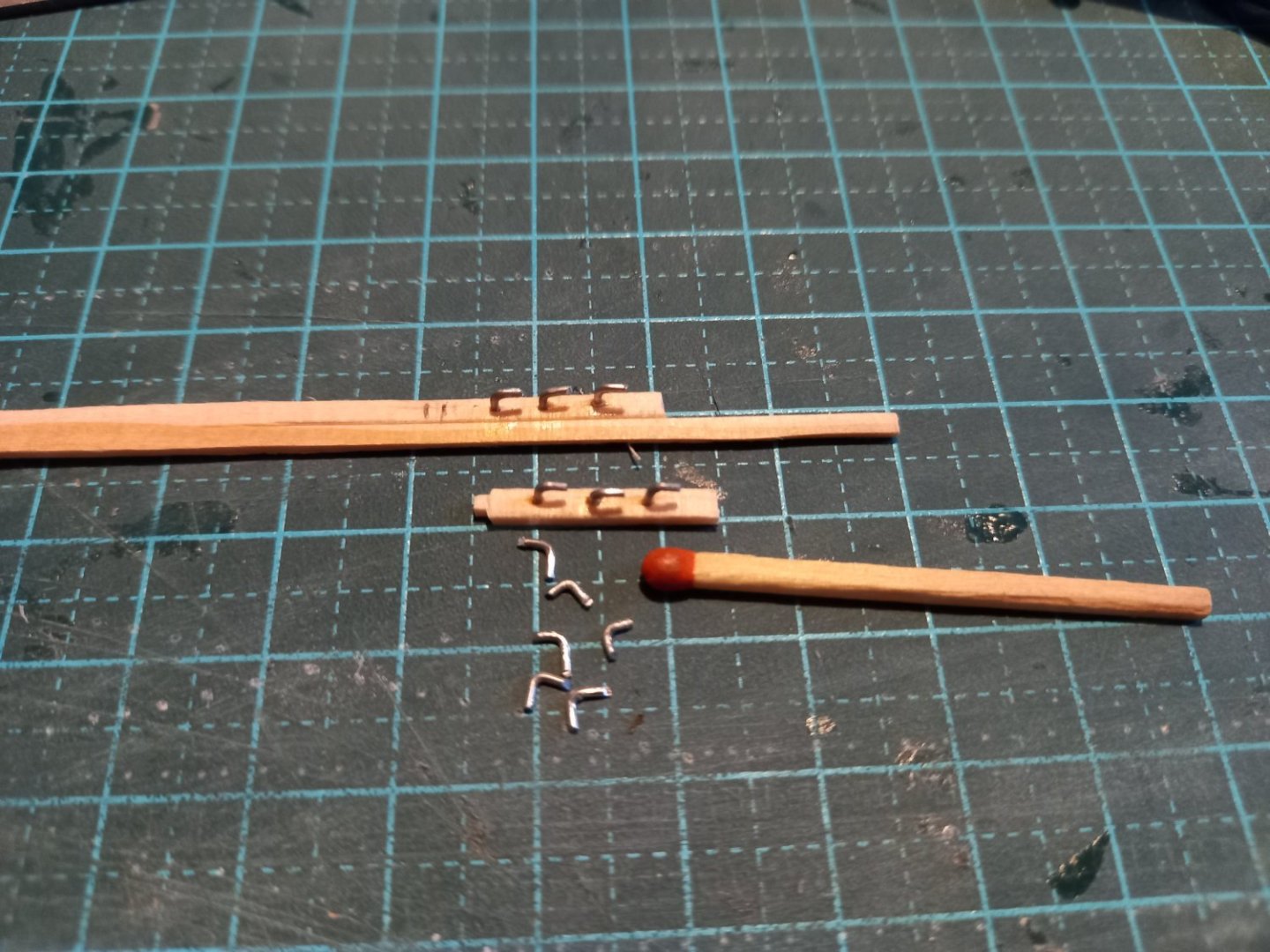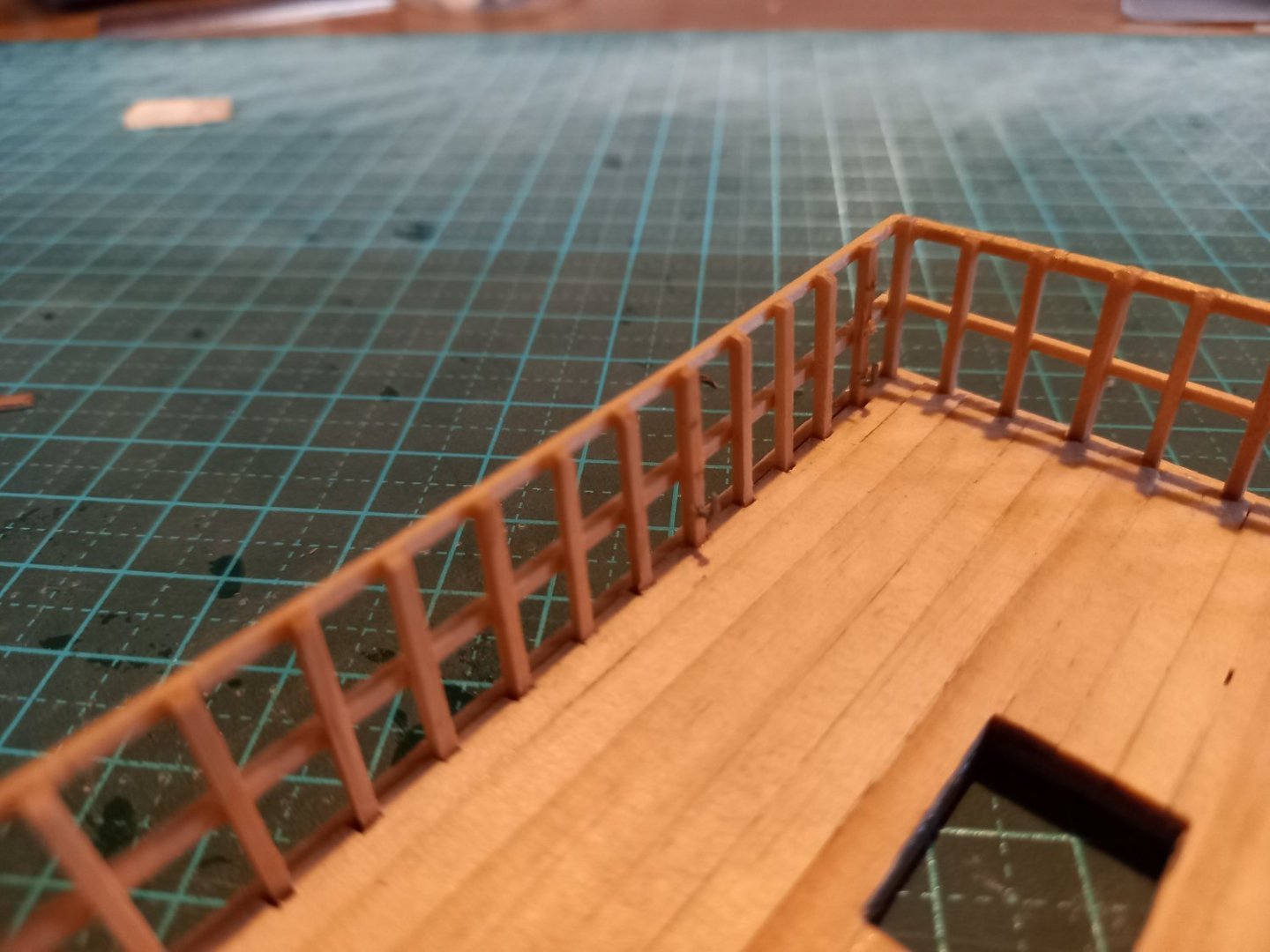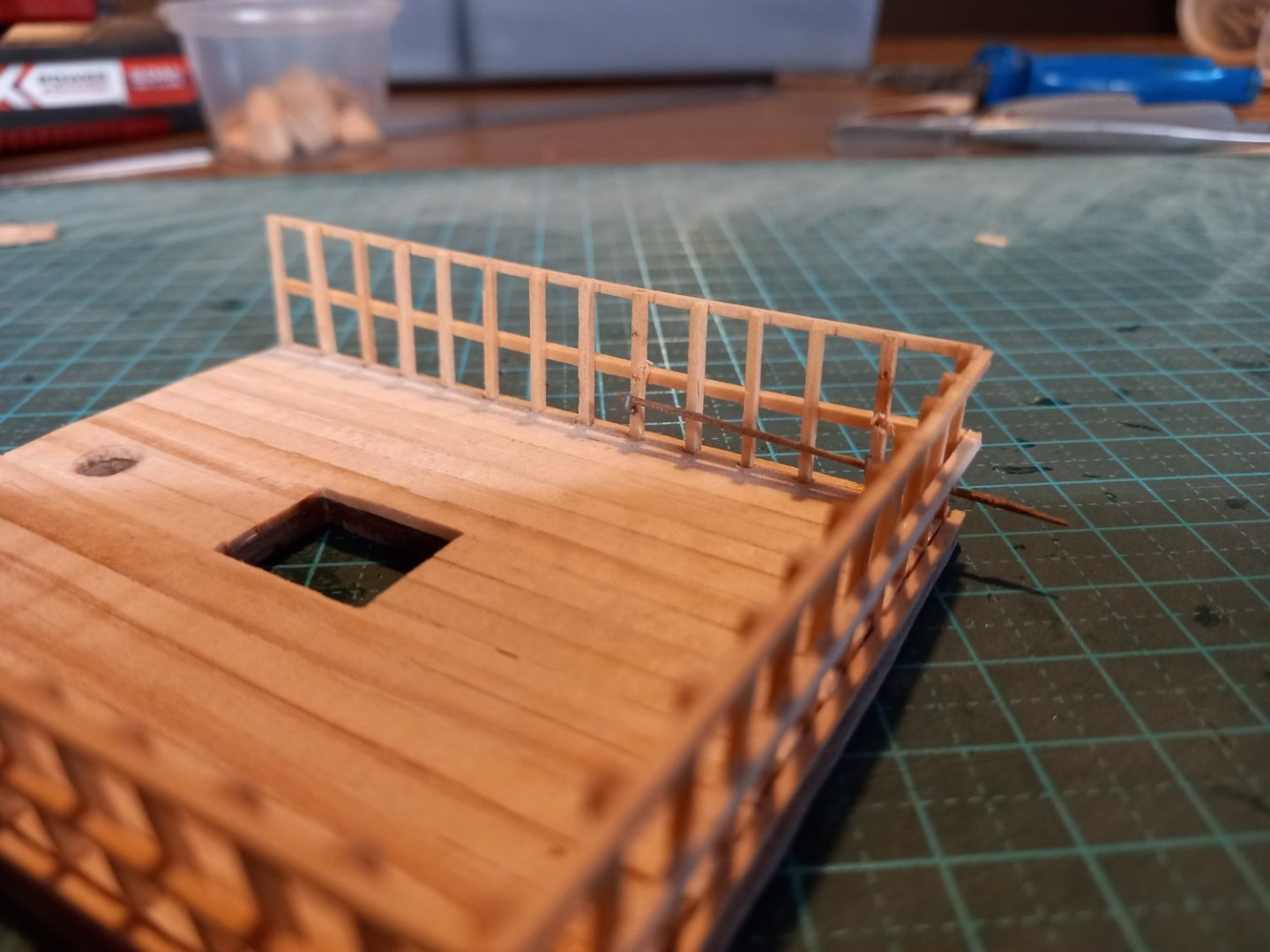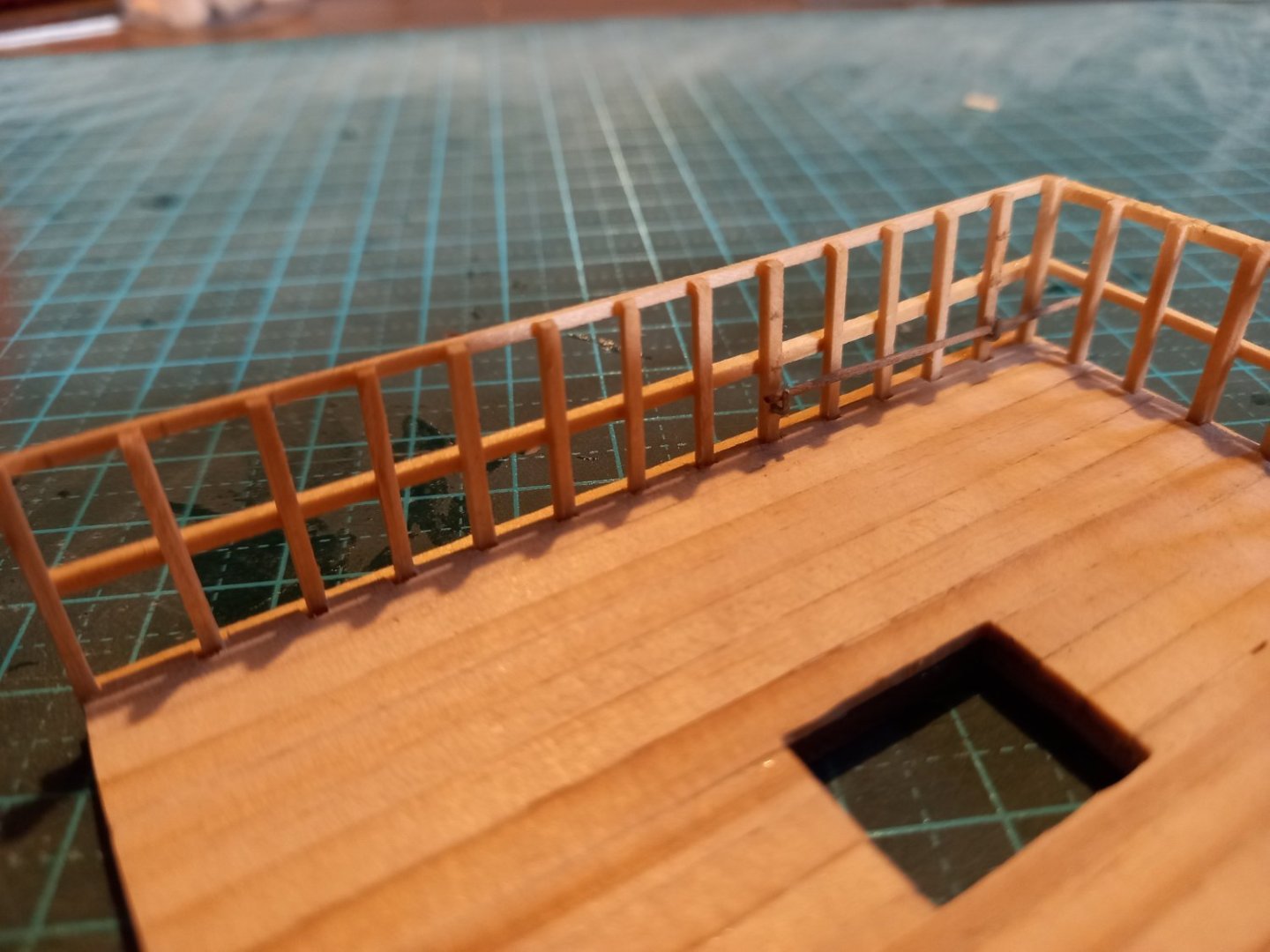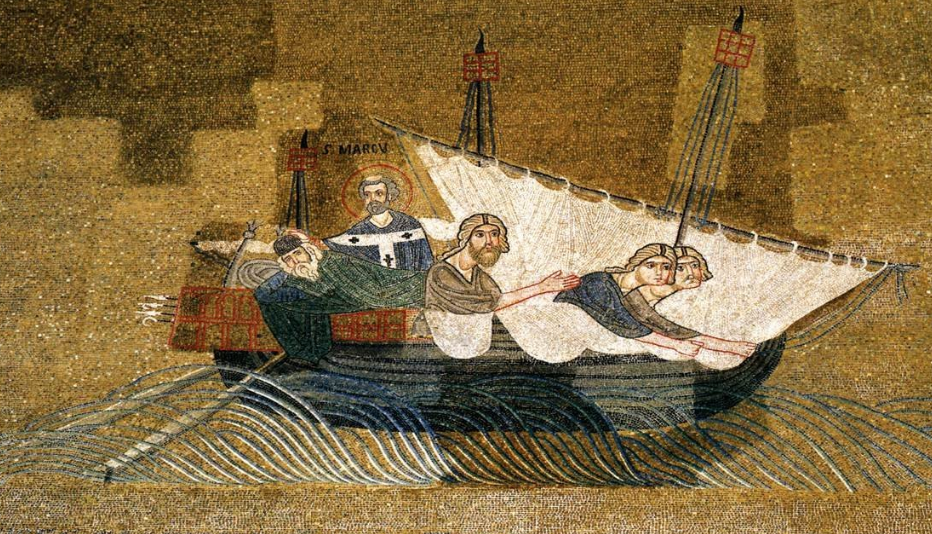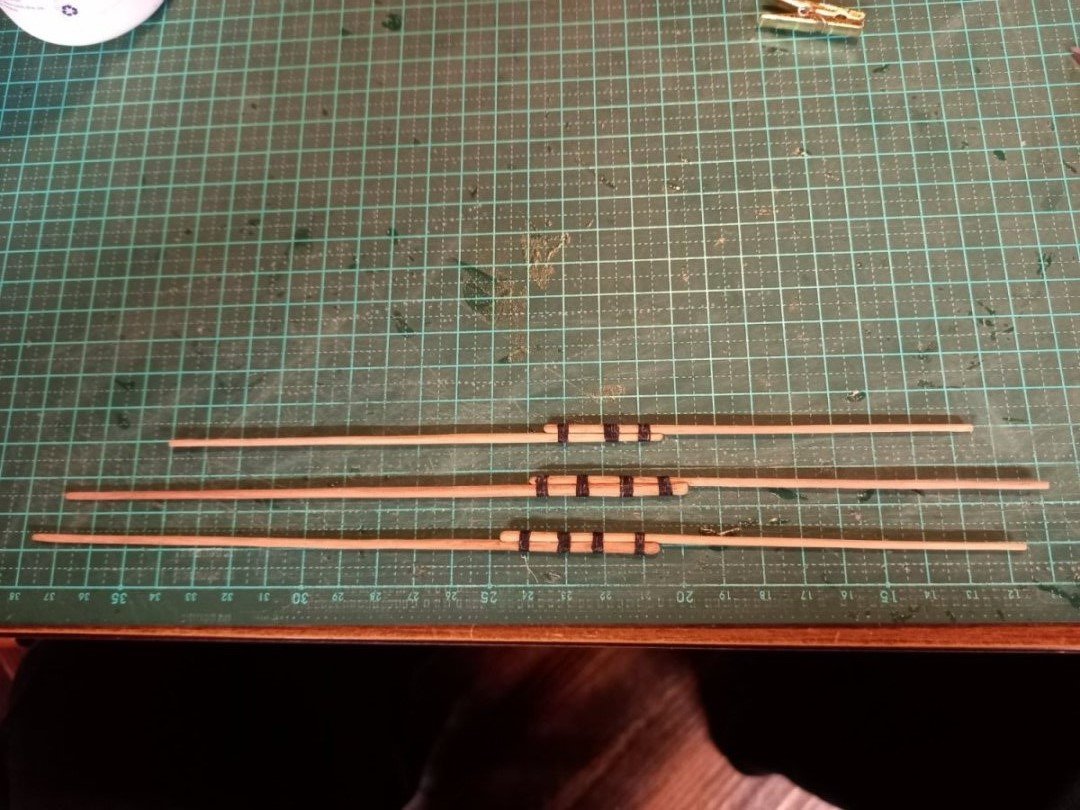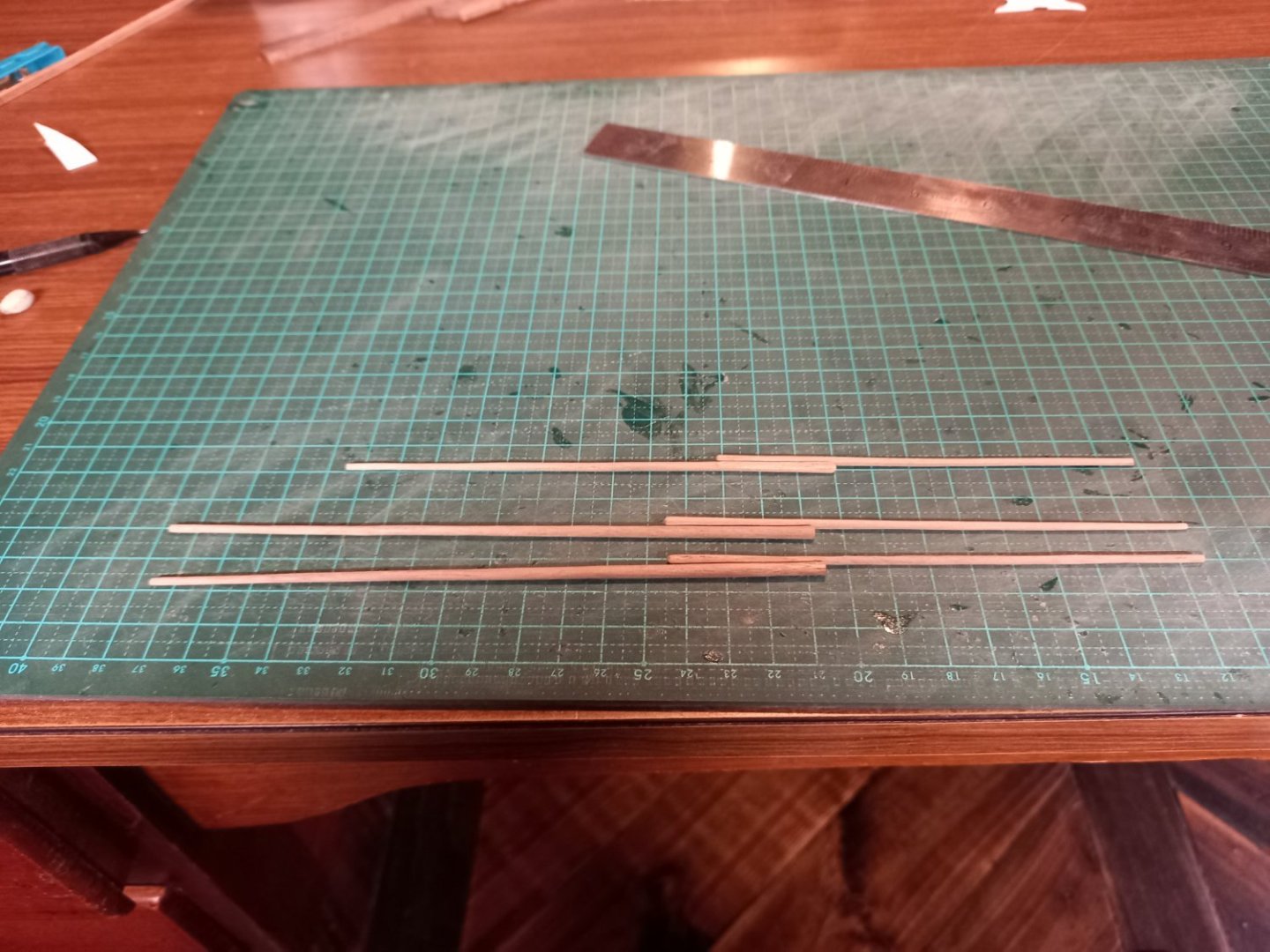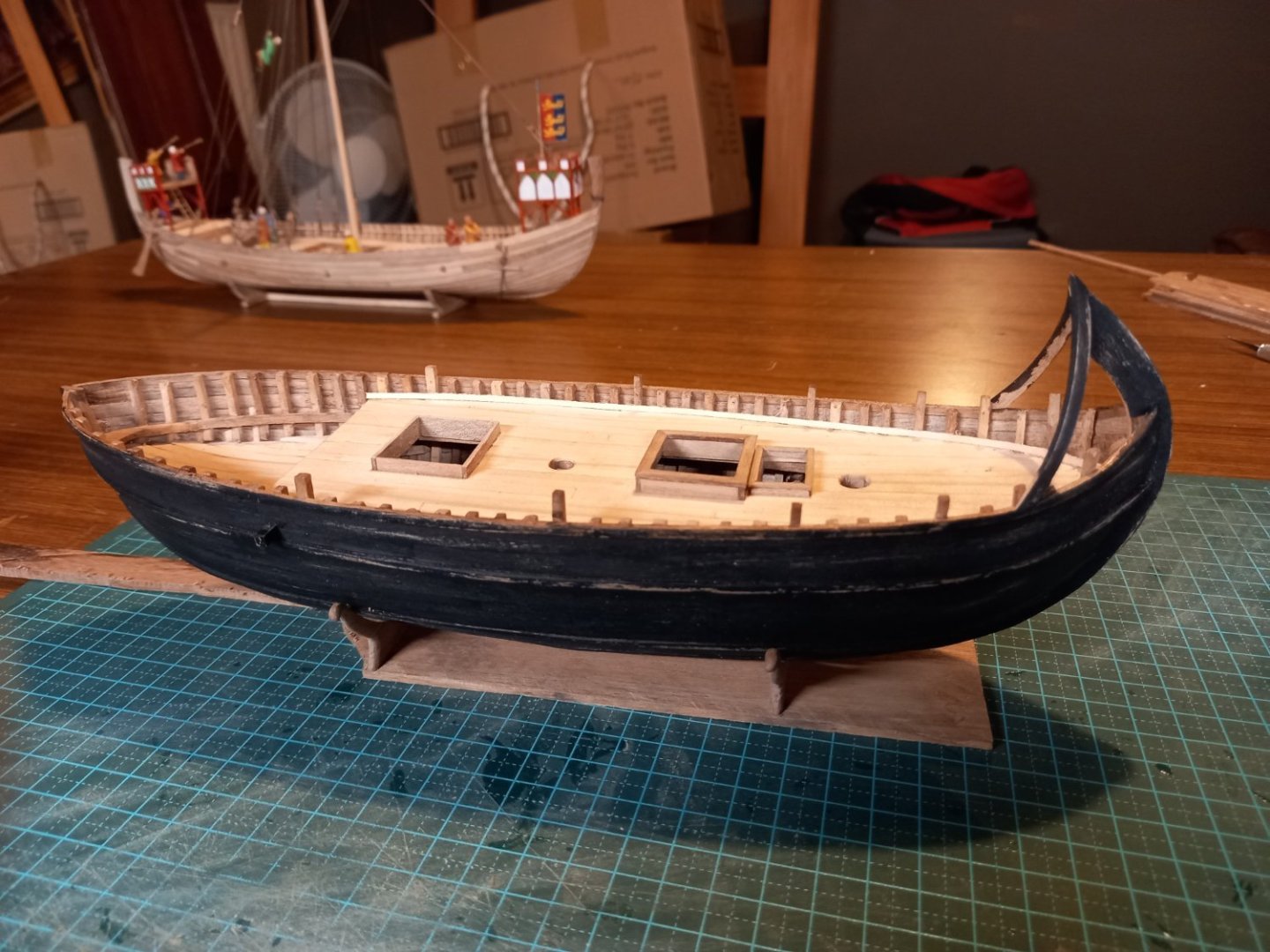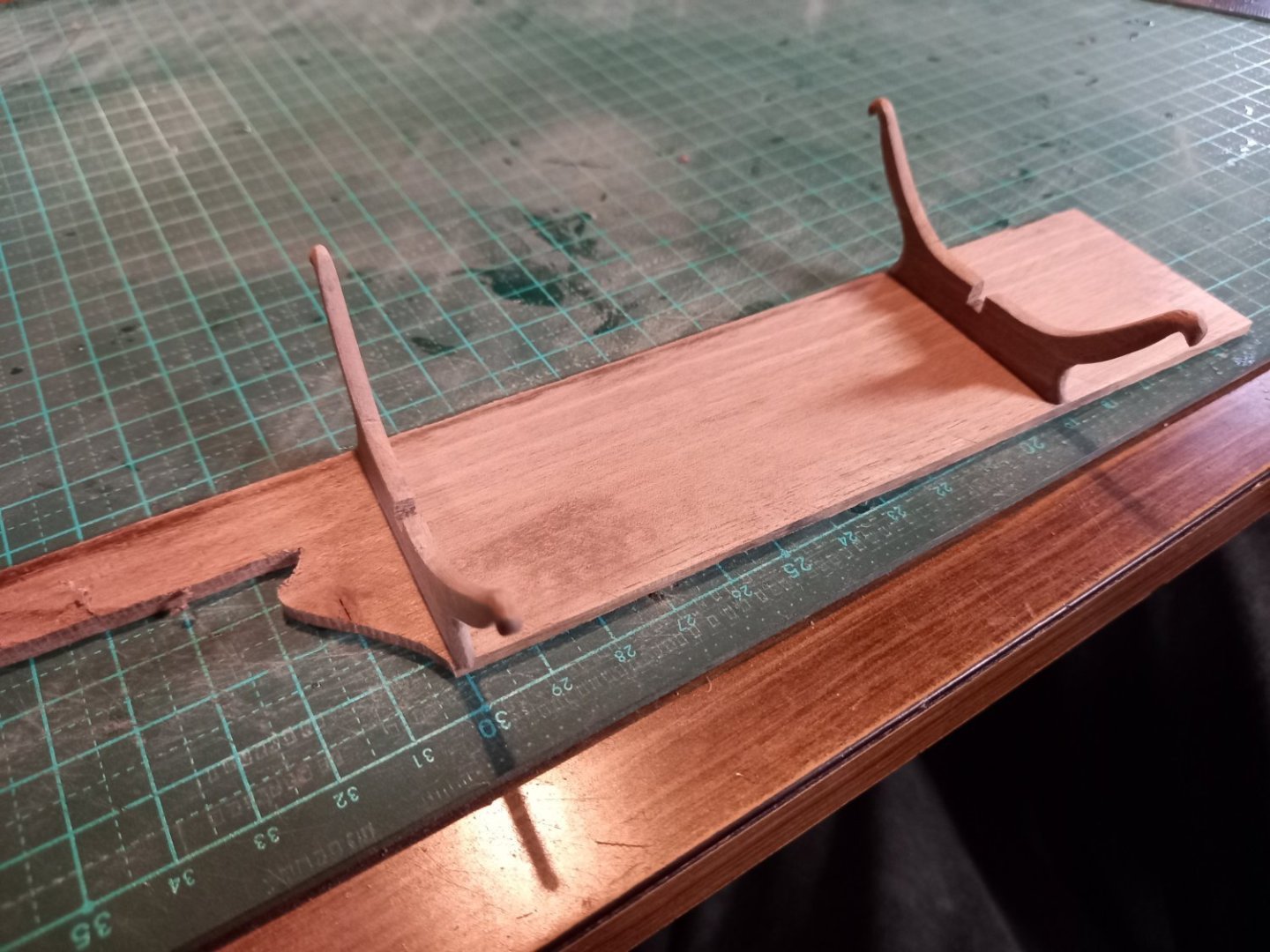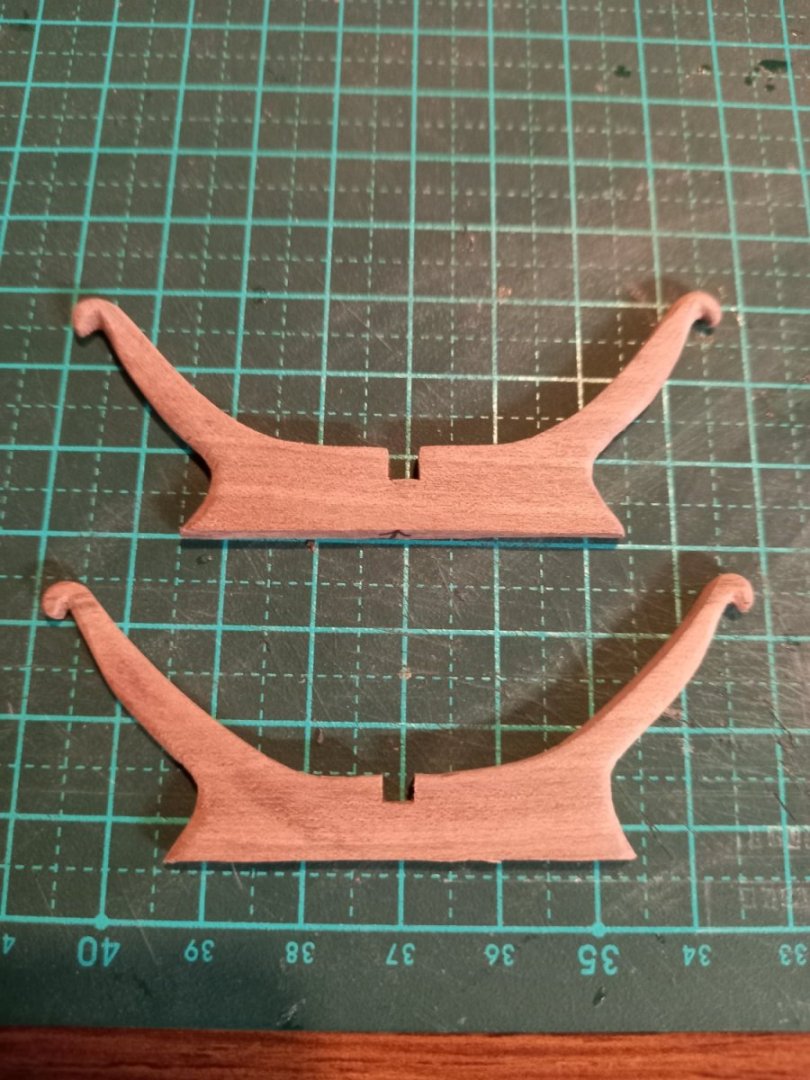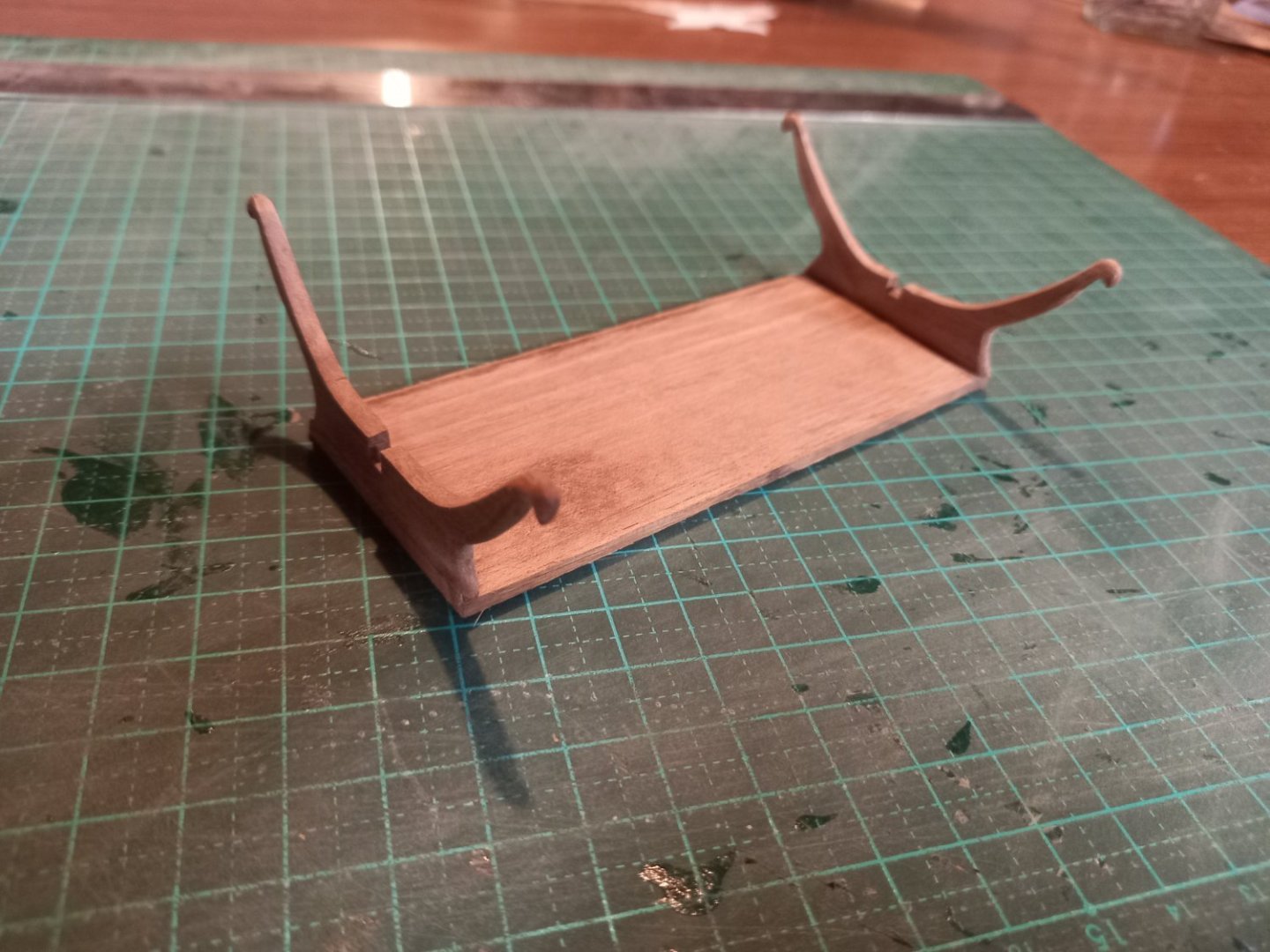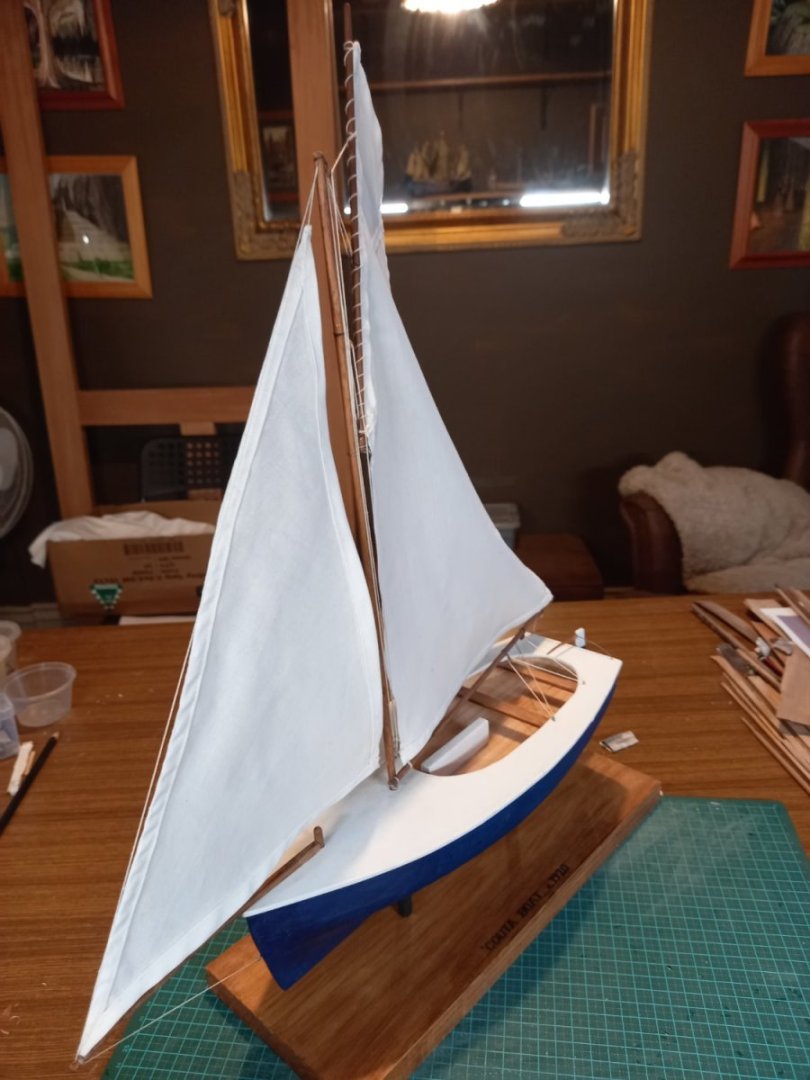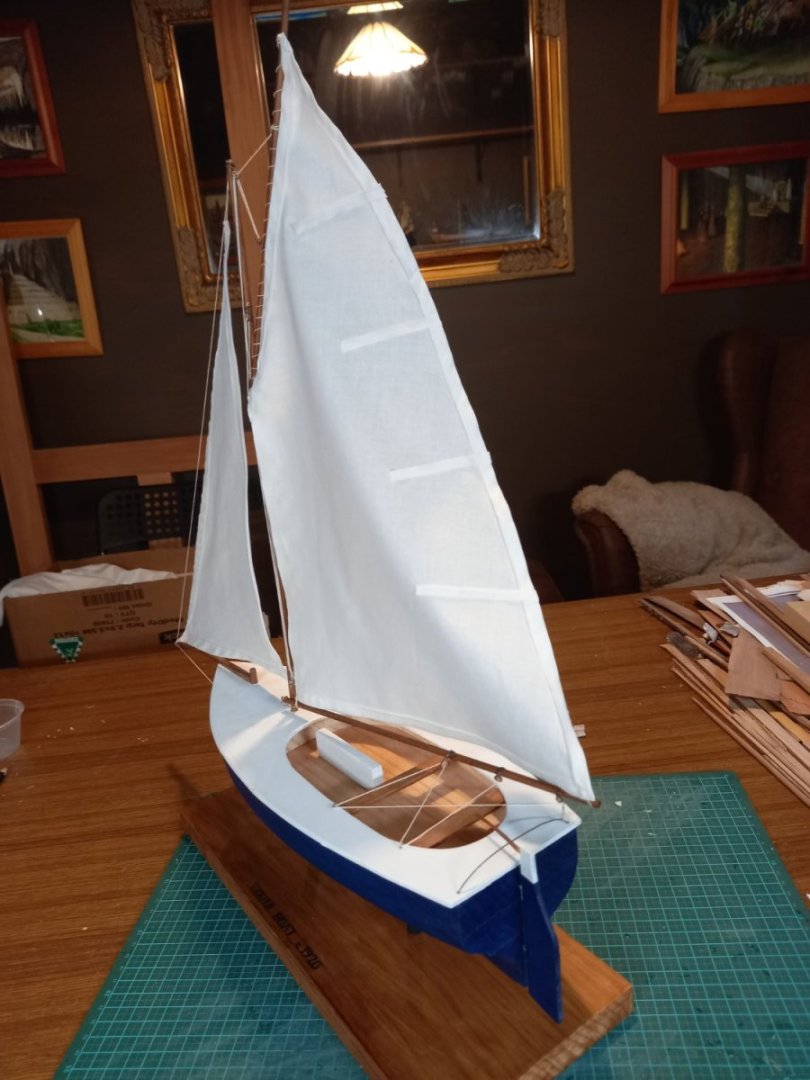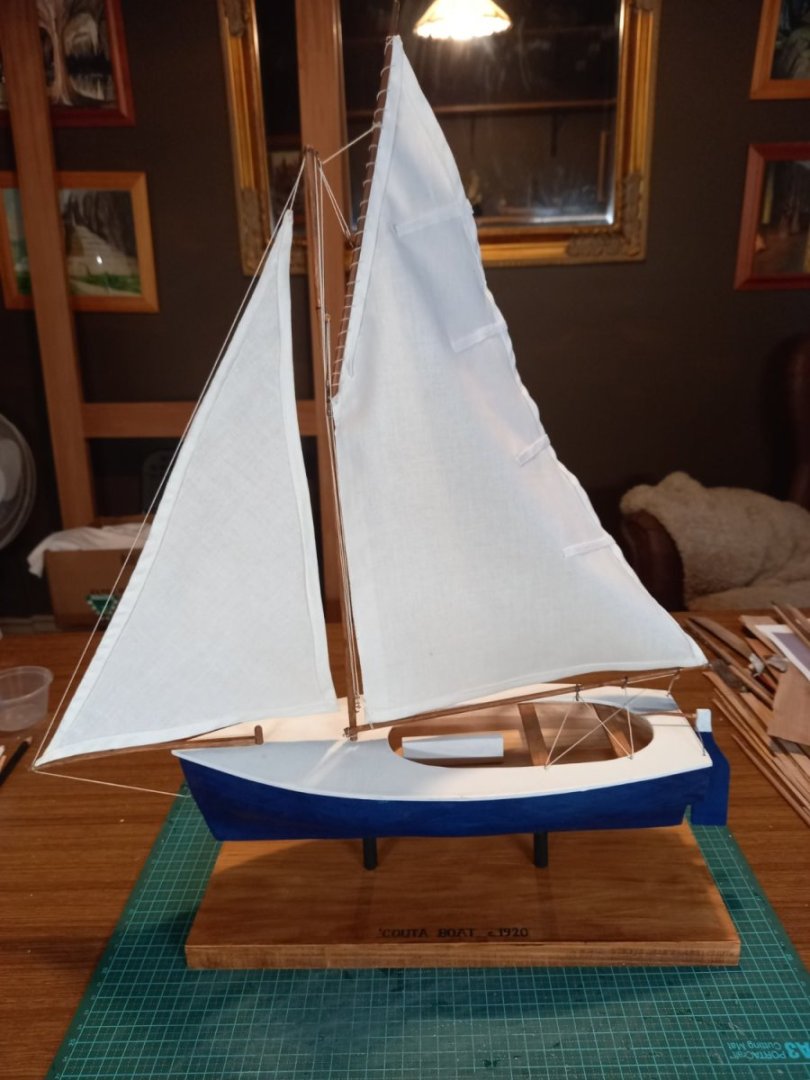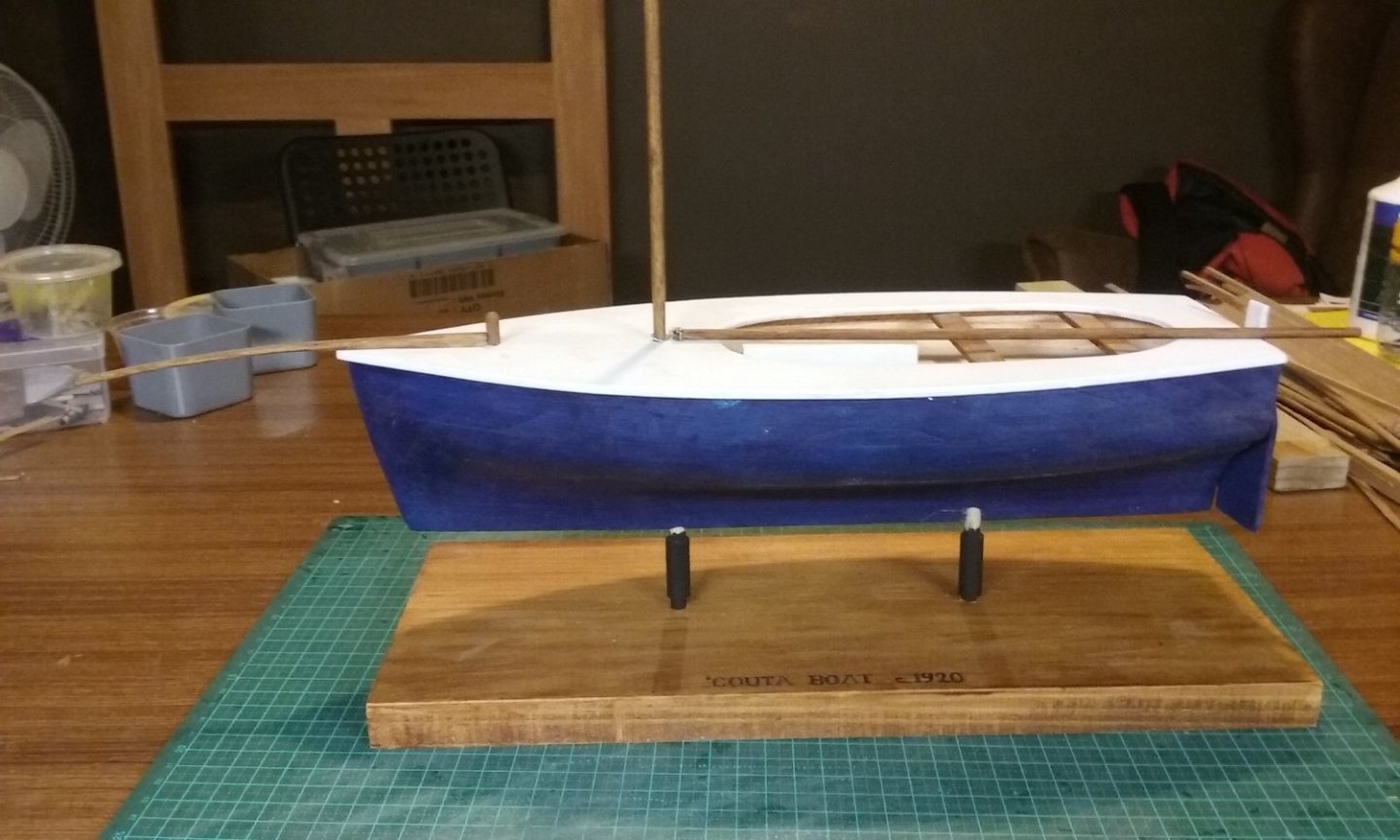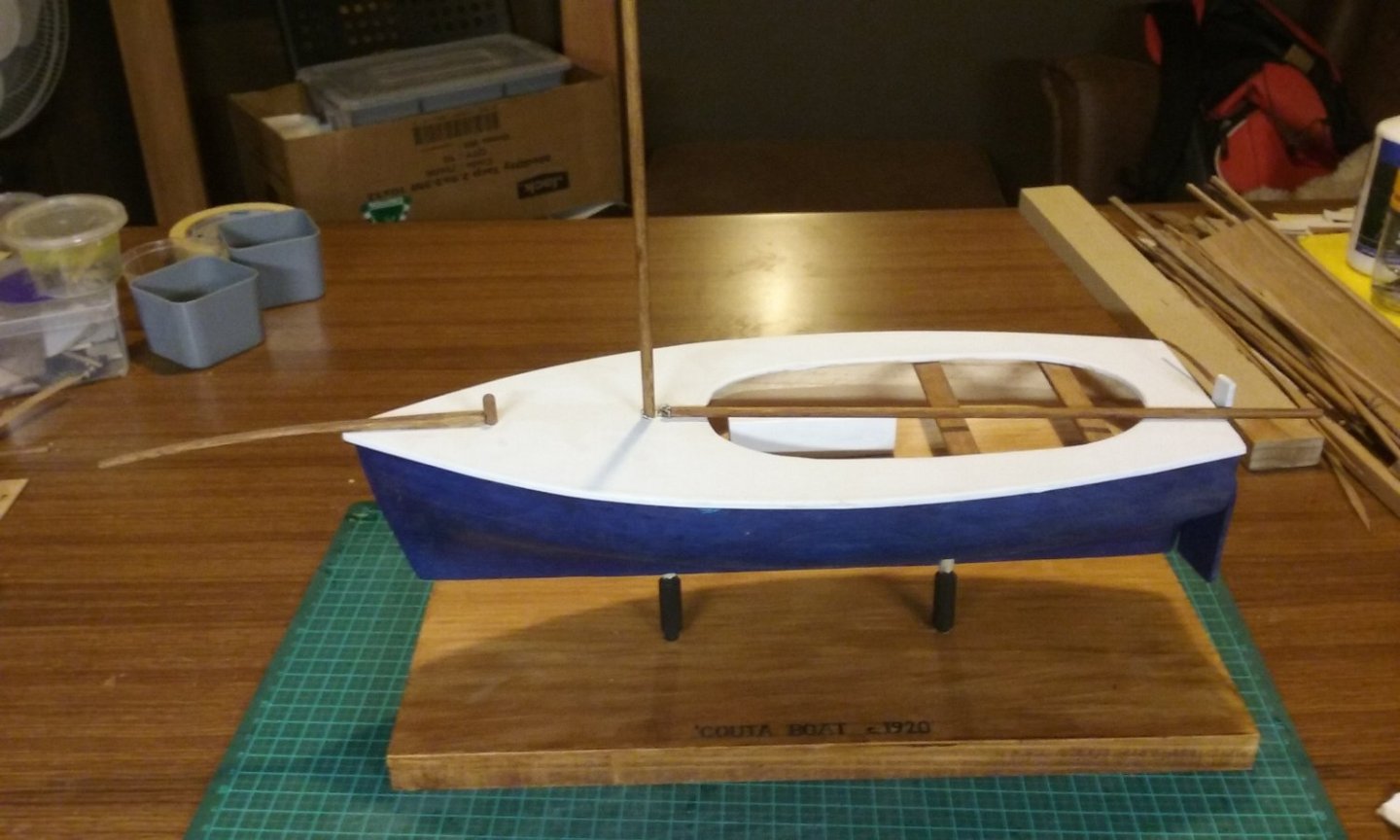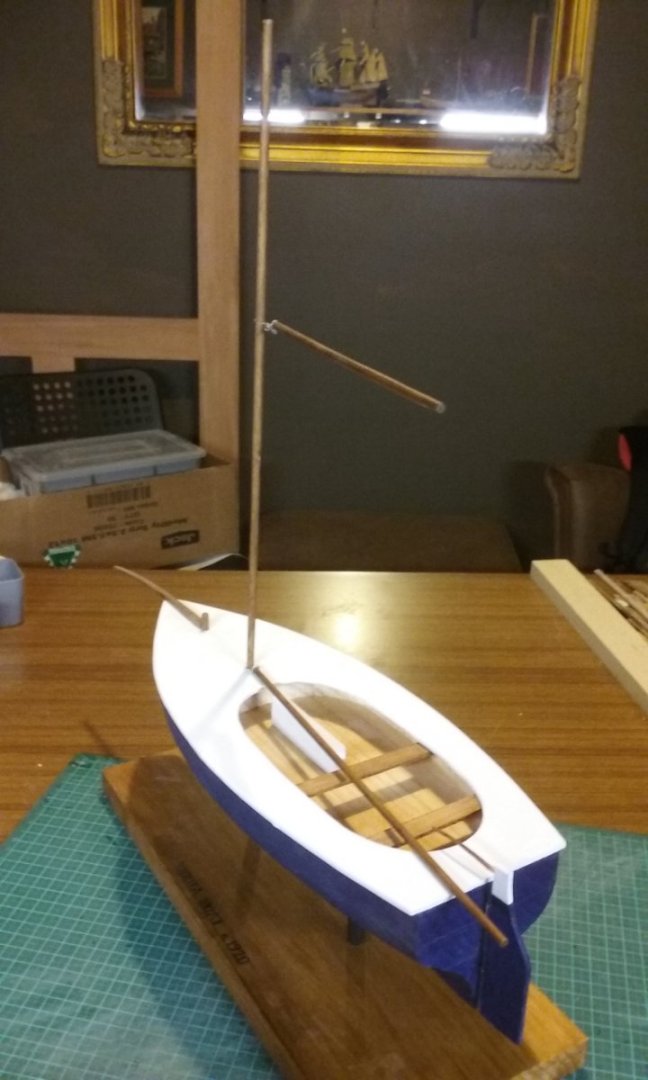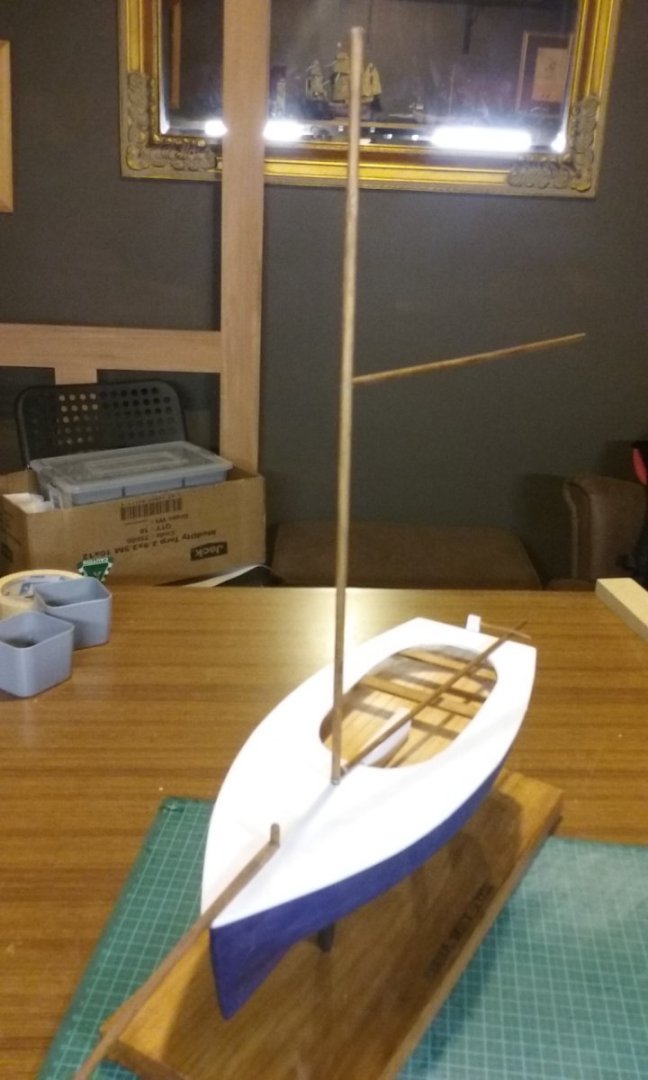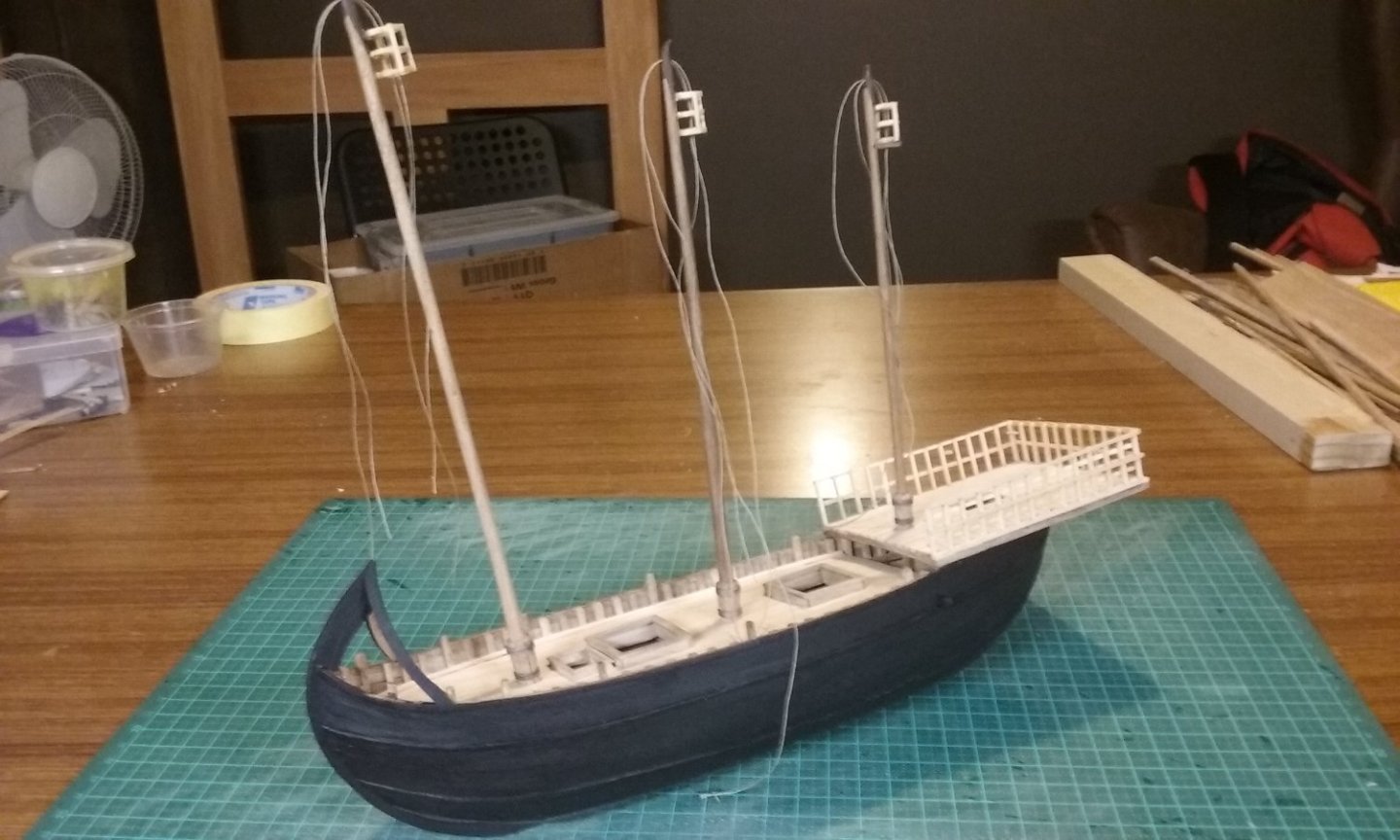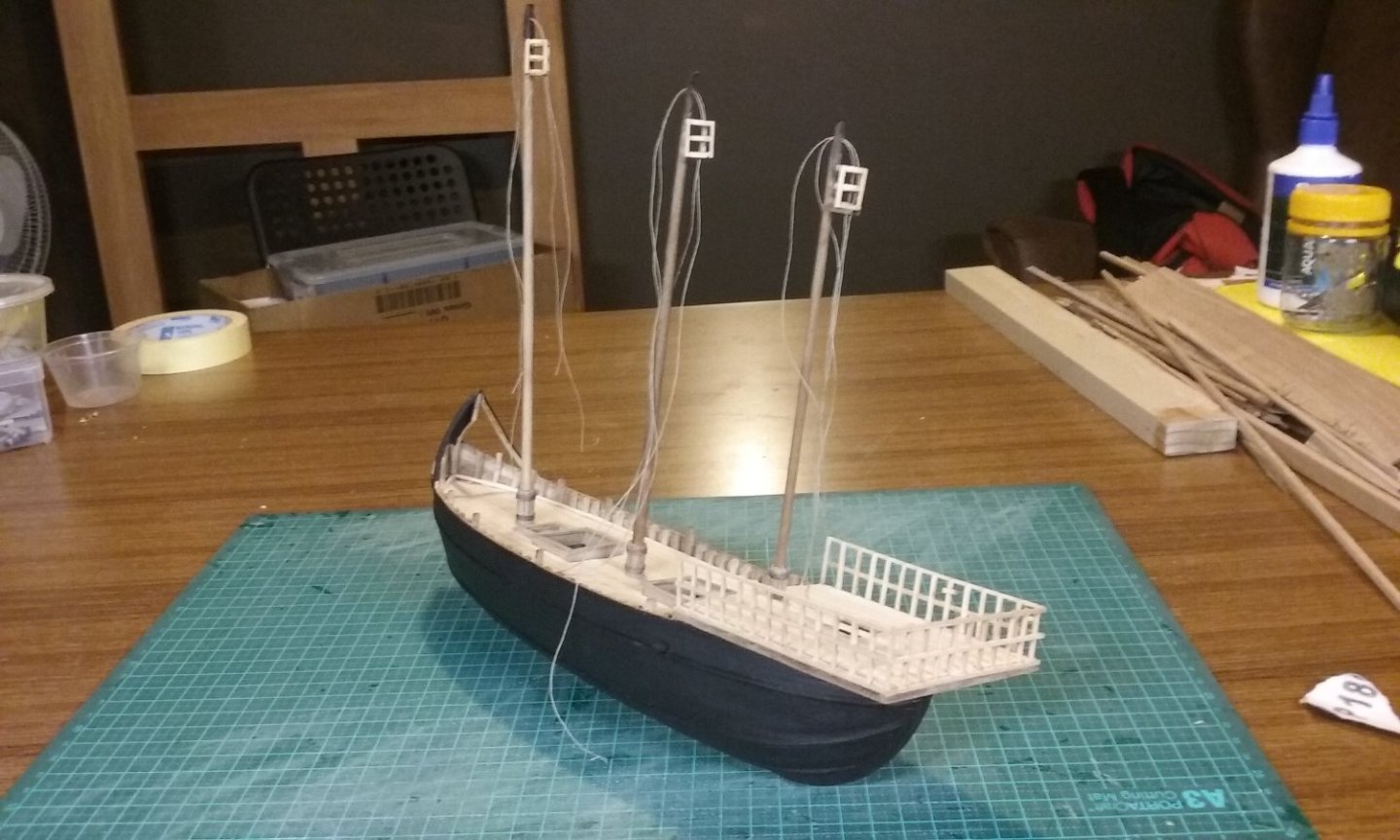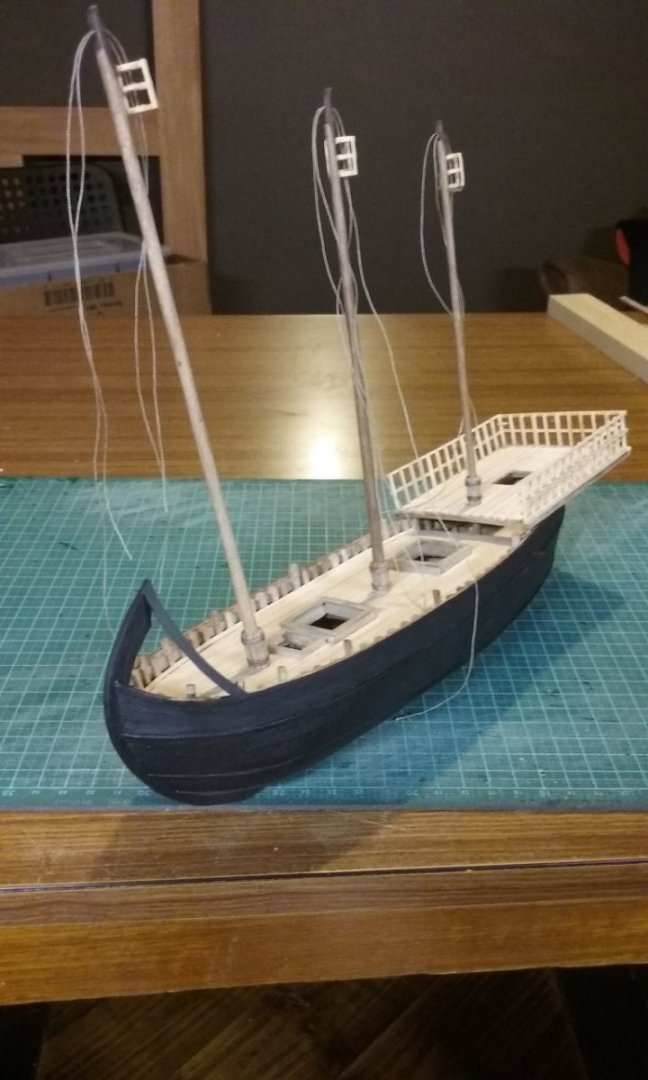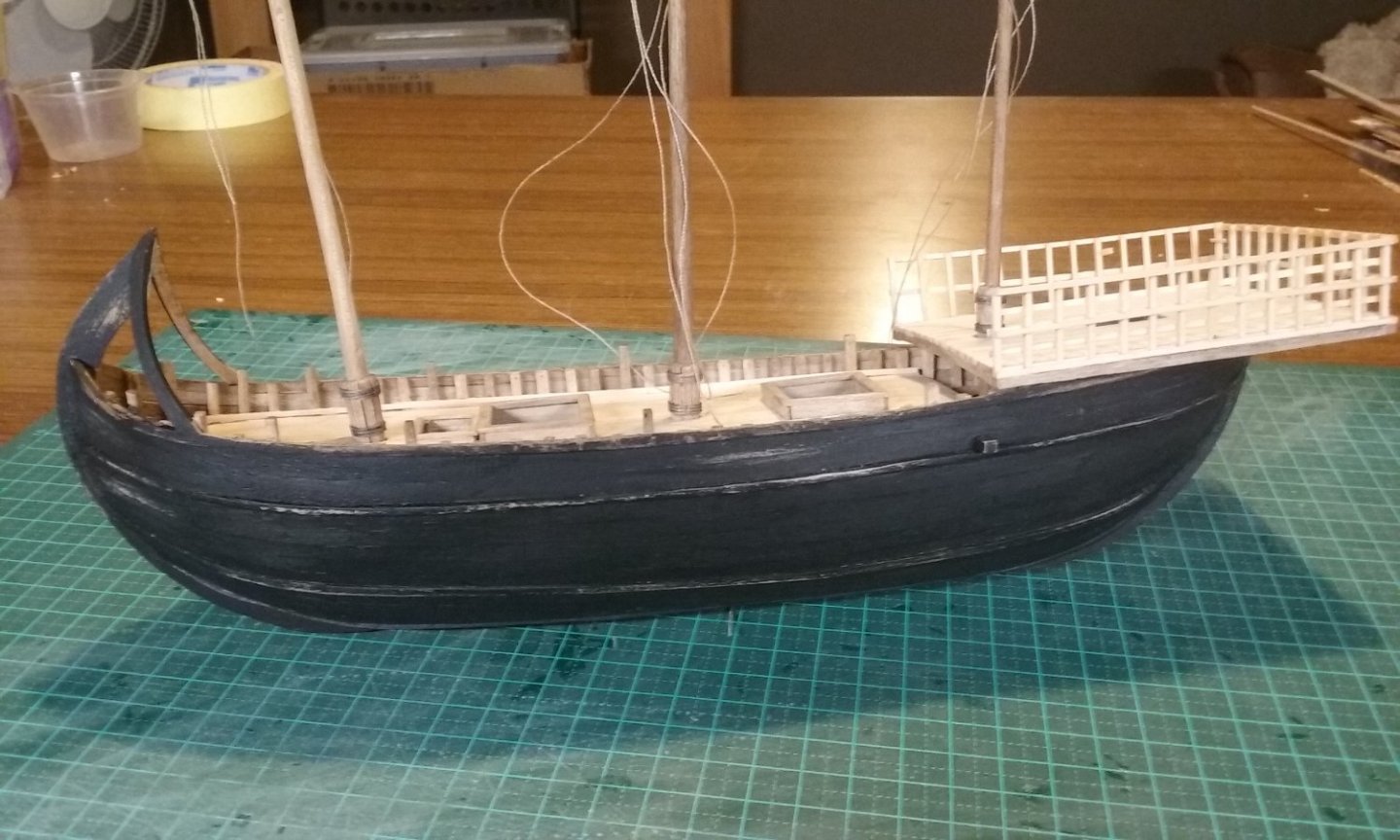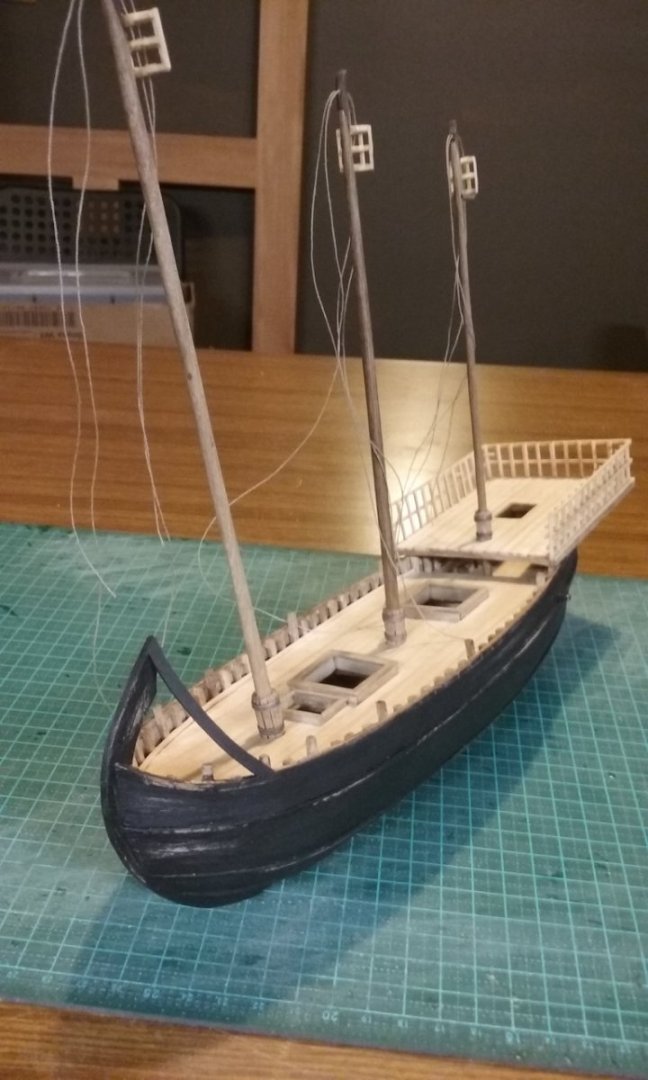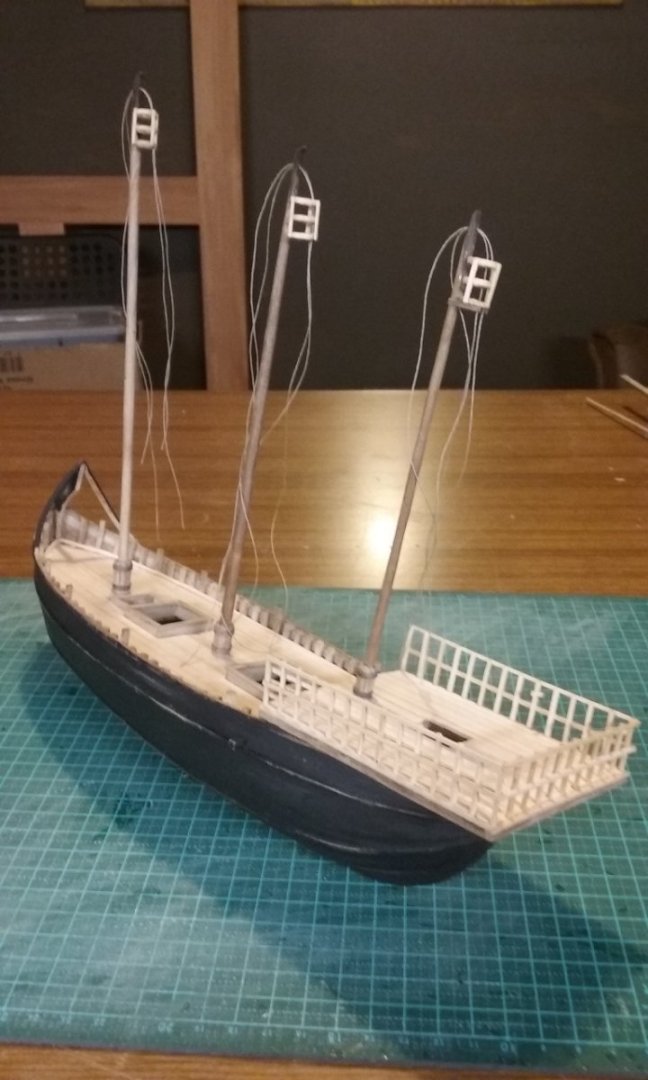-
Posts
7,989 -
Joined
-
Last visited
Content Type
Profiles
Forums
Gallery
Events
Everything posted by Louie da fly
-
In fact the 'crenellations" turn out to be only two gaps. The rest are only an optical delusion (yes, I know that's wrong, but I think it sounds better) caused by rope coils hanging over the side making it look like there are more gaps. Yes, upsetting to discover that my mosaics have been tampered with, but in truth, I think the only thing I'm likely to change is that bow-brace. It doesn't appear on any other ship of the period I've been able to find, (or any other for that matter, until you get to maybe the 18th century, and that's something completely different) so I think I'm going to get rid of it (even though my stepdaughter thinks it looks nice - she just doesn't understand . . .) Regarding colour, I'm still not happy. I really want the wood to look silver-grey, like normal weathered timber, not dirty timber. Time to try again - I think I'll introduce some white into the mix and see what happens. Steven
- 508 replies
-
Thanks everybody for the helpful comments. But now onto other things. To be honest, I feel like a bit of a twit. For some years among my store of TAMU Masters' theses (copied before they stopped making them unavailable on-line) I've had one by Lilian Ray (now Lilian Ray Martin) called Venetian Ships and Seafaring up to the Nautical Revolution: A Study Based On Artistic Representations of Ships and Boats Before c. 1450. This was later released as a full-length book entitled The Art and Archaeology of Venetian Ships and Boats. Among the pictures she deals with are the mosaics in San Marco upon which I've based this model. Today while chasing up something else, I looked at this thesis properly for the first time. And I've learnt a few things. First, that the mosaic I've mostly used was extensively restored during the Renaissance, so that many of the details I've been relying on may be - well, unreliable. In particular, to me it casts suspicion on the curved 'brace' at the bow, which appears only in this one mosaic. Was it added later, and if so should I remove it? And those strange extensions below the aftercastle - are they also later additions? As I had no idea what they could be I omitted them, and now I'm rather glad I did. And two of the other mosaics were extensively - and badly - restored in the 1880s. Another thing - one of the mosaics I included in my references turns out to be part of a completely different series. Still about the same date and still in San Marco, and the ships are so similar in many ways that I think I'm still right in using it as a reference. But the author proposes that the strange "battlements" on this ship show spaces where part of the upper works have been removed to facilitate loading cargo, as in Woodrat's Venetian Round Ship. Not only that, she references another example of this in a 14th century fresco by Andrea di Bonauito de Firenze - The Conversion of St Ranieri in the Camposanto of Pisa (modelled after a 13th century original by Giotto). Woodrat take note. So I'm left with a bit of a quandary. Do I remove that bow-brace? I'm very tempted to do so, despite all the work I put into it. By the way, I have to say though much of the thesis is very illuminating, I don't agree with everything she says. Particularly she mistakes what is very obviously the outline of a sword hanging from a character's waist, for ropes controlling the rudder. But generally a very interesting read and certainly got me thinking. Steven
- 508 replies
-
Good observation. Very interesting. And yes, climbing along the yard seems to have been how sails were set and furled. Still happening in the 20th century. Steven
-
Thanks everybody. I'm of the same opinion, but wanted to see what others thought. Further comments and suggestions welcome. Steven
- 508 replies
-
Very true, and if you can come up with something that you believe fits the evidence better, go for it! Steven
-
I've been experimenting with weathering, and I'd like the team's opinion. I don't really want the ship to look completely neglected, but I'd like to show that she's been in use for a good while. Here are two tests I made to weather the decks - the first was using a thin (water-base) wash of acrylic - not too good because the water made the fibres of the wood rise up. The second I used (black) enamel thinned out with mineral turpentine. What I'd like to ask the team is - is this too much? Does she look like a tramp, rather than a normal ship that's been reasonably kept up, but has been exposed to the weather over a good period of time? The other problem, by the way, is that there are bald spots where the paint has been over the top of white glue. I'm hoping I don't encounter this when it comes to the real thing. On to the rest of my recent progress. Making and installing the pumps: I thought long and hard about how to fix the lower ends of the shrouds. I decided (as this is the Mediterranean) to use pairs of blocks, not hearts or deadeyes. But there's simply no evidence at all of how they were fixed to the hull in 1150. Nix, nada, nuthin'. I've made a series of beams attached to, and joining, the fronts of pairs of frames. In each one is an eyebolt to hold the lower end of the strop around the lower block, plus a vertical peg to tie off the downhaul. This is a possible configuration, but is almost certainly not what was actually used. But in the absence of available evidence, hey, what can you do? Certainly, I don't think anybody can prove I'm wrong. Eyebolts from garden tie-wire: This had a high failure rate - I used a pair of fine long-nosed pliers to do the bending, and quite often the shape just turned out wrong. I've kept the failures in case I can use them for something where the wonky shape doesn't matter. Beams with eyebolts: Pegs under way: Checking diameter: Cut to length And dry fitted Steven
- 508 replies
-
I'd agree that this reconstruction drawing very accurately reflects what little evidence we have on the shape of caravels - and it's a beautiful shape (cara bella! one of the possible derivations of the name). I have great respect for Landström's work. He really had a good understanding of what was likely in a vessel if it was to be seaworthy. Weirdly, caravels were quite tiny for something that traversed the world - about the size of a fishing boat. The rigging in this pic would be the standard rigging for a lateener, but I agree you're best checking out the contemporary imagery for yourself to confirm or discard what is shown here. Watching with interest. Steven
-
That's a really nice colour scheme. Looking forward to seeing it complete. Steven
- 536 replies
-
- Quadrireme
- radio
-
(and 1 more)
Tagged with:
-
Looking good so far, but I'm looking forward even more to seeing it completed. Steven
- 174 replies
-
- Waa Kaulua
- bottle
-
(and 1 more)
Tagged with:
-
Hi Mark, I'm glad you think so. I do love the mosaics. Whether they inspired the interest in the boats - well, long story. Before I got back into ship modelling, I'd been into mediaeval re-enactment for many years, particularly concentrating on Anglo-Saxon and Byzantine, where they came together in the Varangian Guard. The mosaics in San Marco are mostly Byzantine-inspired, as Venice was in Byzantium's cultural orbit for centuries (until they bit the hand that fed them in 1204!), so I naturally gravitated toward them. Once I got into ship modelling again, they stayed at the back of my mind but I'd never really been able to figure out how they would have been in real life until I saw some modern sketches that inspired me (I think the story of all this is on the first page of this build log). That got me going, and it all proceeded from there. But a lot of research was needed, and I also got a lot of help from Woodrat who'd made a model of the 14th century Contarina ship. I hope that answers your question. Steven
- 508 replies
-
Wonderful work - again! And of course rocks look like rocks! Looking forward to seeing more as you make progress, Glen. Steven
- 174 replies
-
- Waa Kaulua
- bottle
-
(and 1 more)
Tagged with:
-

Ships at Trafalgar - what kits are available?
Louie da fly replied to bruce d's topic in Wood ship model kits
And what about the Fighting Temeraire? -
Thanks everybody for the likes and comments. I'm afraid I'm not very systematic in building. I often make things as the mood takes me rather than follow a logical sequence. Sometimes I end up painting myself into a corner, but so far I've mostly managed to avoid that on this build (touch wood). I've puzzled for some time over how to support the spears and other pole-arms sticking out at the stern shown in several of the mosaics. I came up with several ideas but none really seemed likely or workable, until I thought of two metal hooky things, (made of bent wire) attached to the uprights of the side railings, to support each shaft. First I tried adding them to the existing uprights. But there was too little space to make the holes to take the hooks and the uprights were too narrow - the holes were almost the width of the uprights. So I removed the existing uprights and made new ones rather wider but still looking like they belonged, made the holes and inserted the hooks before putting the new uprights in place. Here are the pole-arms. Mostly simple spears but one was more like a harpoon and another had a head in the shape of a shepherd's crook - which I believe was intended to cut the rigging of an enemy ship. Took a fair bit of work - they're pretty small - but finally got them done. Painted the heads silver, and the hooks on the railings black to resemble forged iron. And here they are dry fitted in place. You can see the pole-arms sticking out the back railing. I've also been working on the lateen yards, for the fore, "middle" and mizzen masts. Each yard is made of two spars lashed together; the upper one longer and with a "hollow" cut into it to take the lower one. (Thanks to Woodrat for the information on how these were configured). Here they are glued together: And with the lashings in place. Steven
- 508 replies
-
Some updates: Making a stand for the ship out of walnut wood. I'm also re-making the stand for my Winchelsea nef - I've never been happy with the old one. The supports are made but need smoothing off. The joining beam is re-used from the old stand. Once finished I'll post it on the nef build log. And here are the yards for the three masts. Steven
- 508 replies
-
Just a bit of context - your gob is your mouth, your cakehole, your north-and-south. So it means being smacked in the gob - pollaxed, blown away . . . Steven (Better than a poke in the eye with a burnt stick). Steven
- 174 replies
-
- Waa Kaulua
- bottle
-
(and 1 more)
Tagged with:
-
Glen, I'm gobsmacked. That's amazing work. Steven
- 174 replies
-
- Waa Kaulua
- bottle
-
(and 1 more)
Tagged with:
-
AAaaand - finished! I've simplified the rig and I'm not totally happy with the sails - my fault. I should have consulted with my wife before I cut, folded and ironed them. She did what she could to correct my mistakes, but there's only so much you can do, even when you've been trained as a seamstress. Ah well, all part of the learning process. Steven
-
Thanks everybody for the help and suggestions, and in particular thanks Woodrat for the photos of vessels with weathered pitch. I think I removed just the amount of paint I needed to on my first run-through. I really don't want to do any more. But I'm thinking seriously of adding greenish below the waterline for weed, and discoloration where water would run down the hull fairly often - such as where the anchors sit, scuppers etc. And weather the anchors when I get to that stage. I suppose I'll also have to weather the aftercastle (I think the mosaic shows it as bare wood, probably pine) with light greys etc as well to continue the theme. Interesting times ahead! No - it's not shown that way in the mosaic so I won't be doing it. Steven
- 508 replies
-
Turned out all right after all, and it actually looks as if it was always supposed to be like that.
- 174 replies
-
- Waa Kaulua
- bottle
-
(and 1 more)
Tagged with:
-
Well, I dry fitted the stuff that's already made but not ready to be fitted, just to get an idea of how it's going to look.. And I tried a bit of mild weathering by sanding lightly with fine grade sandpaper in places where I think there'd be a bit of wear. Didn't turn out too badly at all. Encourages me to go a little further (without pushing it too hard - I don't want to mess it up). Mark, that's two coats of standard cheapo acrylic from a school-style set for doing pictures with. Steven
- 508 replies
-
The client took delivery of the model yesterday. Very happy with it. I didn't think to take a photo of him holding it, unfortunately. Steven
About us
Modelshipworld - Advancing Ship Modeling through Research
SSL Secured
Your security is important for us so this Website is SSL-Secured
NRG Mailing Address
Nautical Research Guild
237 South Lincoln Street
Westmont IL, 60559-1917
Model Ship World ® and the MSW logo are Registered Trademarks, and belong to the Nautical Research Guild (United States Patent and Trademark Office: No. 6,929,264 & No. 6,929,274, registered Dec. 20, 2022)
Helpful Links
About the NRG
If you enjoy building ship models that are historically accurate as well as beautiful, then The Nautical Research Guild (NRG) is just right for you.
The Guild is a non-profit educational organization whose mission is to “Advance Ship Modeling Through Research”. We provide support to our members in their efforts to raise the quality of their model ships.
The Nautical Research Guild has published our world-renowned quarterly magazine, The Nautical Research Journal, since 1955. The pages of the Journal are full of articles by accomplished ship modelers who show you how they create those exquisite details on their models, and by maritime historians who show you the correct details to build. The Journal is available in both print and digital editions. Go to the NRG web site (www.thenrg.org) to download a complimentary digital copy of the Journal. The NRG also publishes plan sets, books and compilations of back issues of the Journal and the former Ships in Scale and Model Ship Builder magazines.




